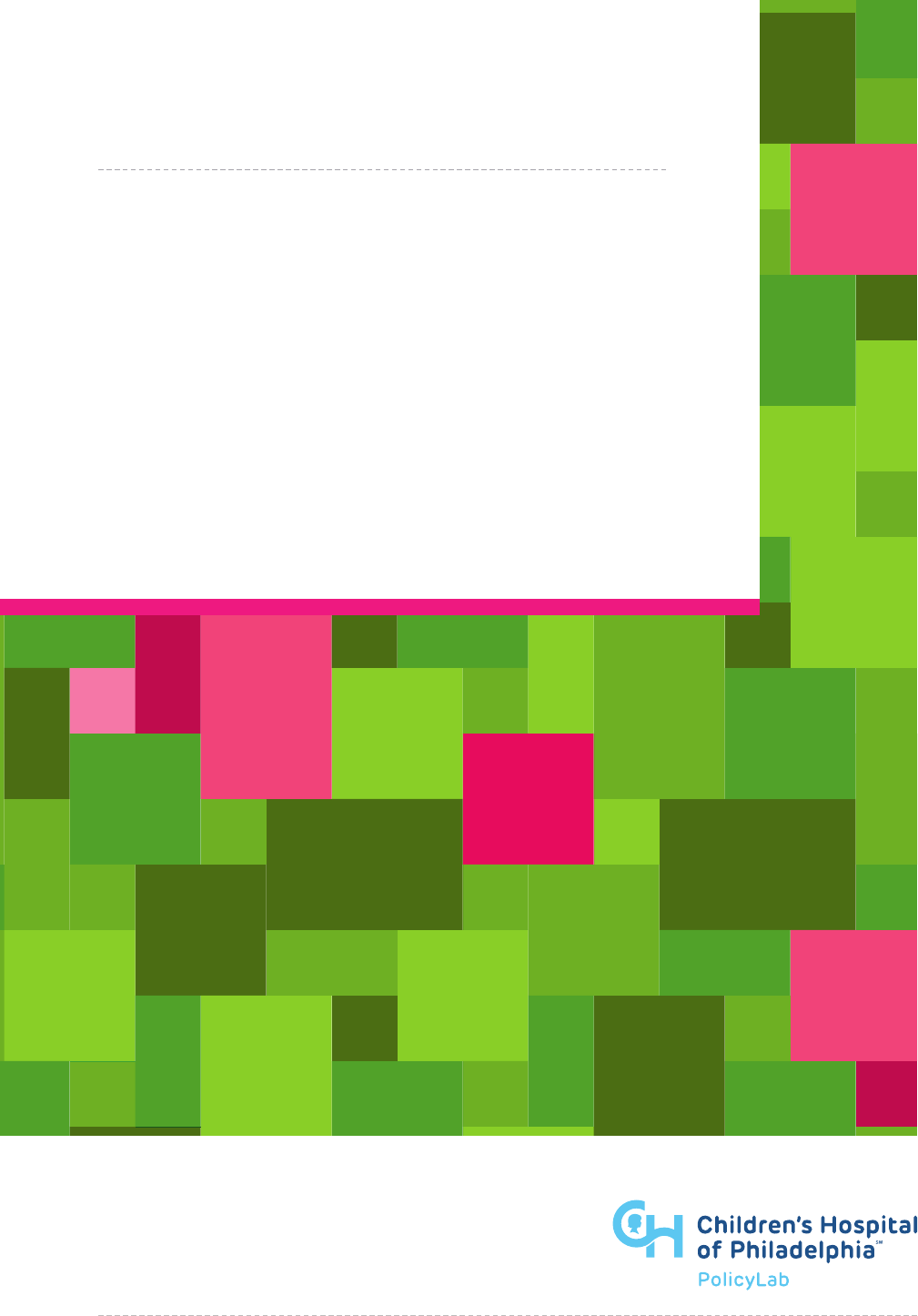
policylab.chop.edu
POLICYLAB
EVALUATION REPORT
| FA L L 2 019
IMPROVING SCHOOL
HEALTH SERVICES
FOR CHILDREN IN
PHILADELPHIA
AN EVALUATION REPORT FOR THE
SCHOOL DISTRICT OF PHILADELPHIA

CONTENTS
2
EXECUTIVE SUMMARY
4
MAIN FINDINGS
6
INTRODUCTION & RATIONALE
8
PROCESS & METHODS
10
FINDINGS & RECOMMENDATIONS
Standards of Practice
Quality Improvement
Care Coordination
Leadership
Community/Public Health
28
FUTURE DIRECTIONS
30
RECOMMENDATIONS RECAP

EXECUTIVE SUMMARY
On behalf of the School District of Philadelphia
(SDP), PolicyLab, a research center at
Children’s Hospital of Philadelphia, conducted
an assessment and review of school health
services offered by SDP in 2019. The
assessment focused on the Offi ce of Student
Health Services and, most directly, on the role
of the school nurse. This report offers key
recommendations based on best practice and
highlights innovative practice examples from
external districts.
The body of this report is structured using
the National Association of School Nurses’
(NASN) Framework for 21st Century School
Nursing Practice (the
Framework
), which
guided the focus of the literature and practice
review and the stakeholder interview guide.
Nursing staff interviews identifi ed the
successes, challenges, and opportunities of
the school nursing role and work.
EVALUATION REPORT | FALL 2019 3
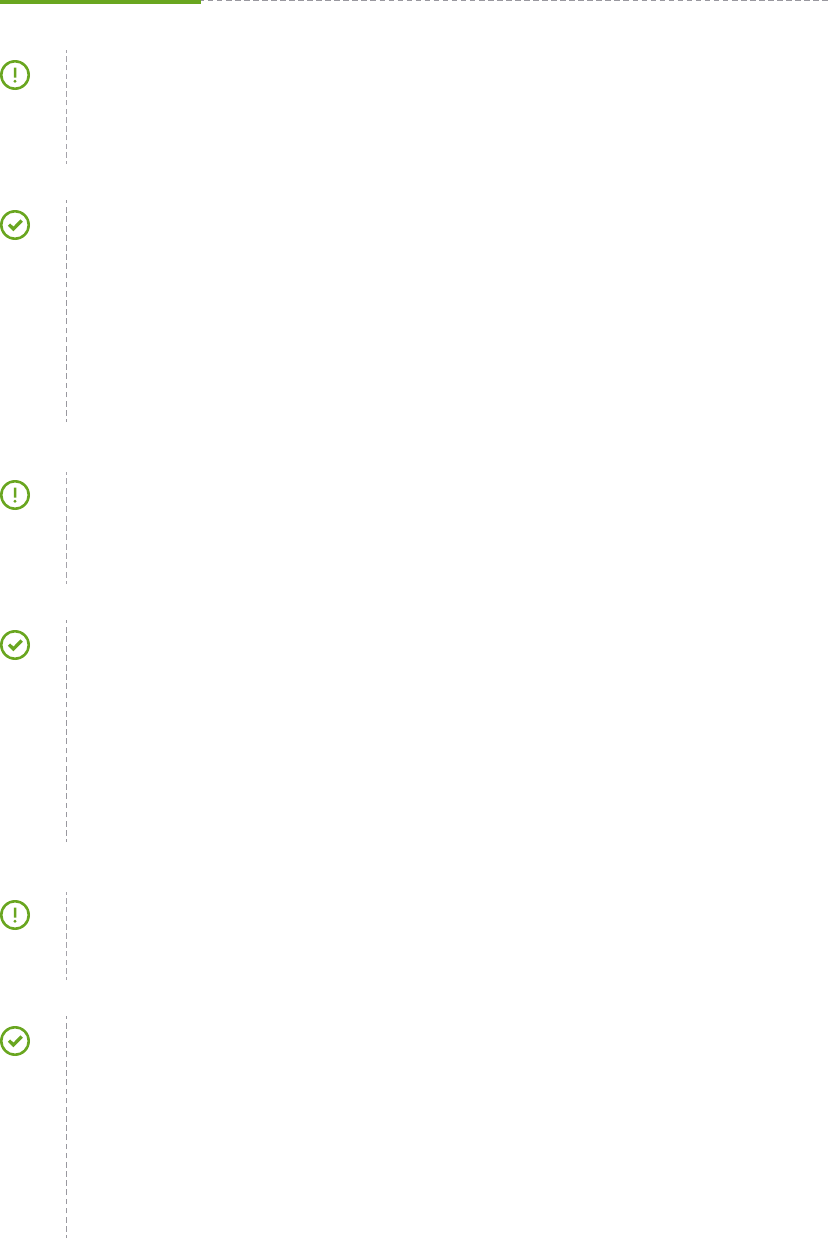
MAIN FINDINGS
FINDING 1:
School nurses and nurse leadership need greater access to data to
eciently and eectively perform job responsibilities and to facilitate
quality improvement initiatives.
SUGGESTED SOLUTIONS:
• Optimize the current electronic health record (EHR) in order to support
standardized data collection, data sharing, and timely, accessible data
aggregation and dashboarding
• Leverage school health data to support appropriate stang models
• Evaluate data-informed decision-making when completing
performance appraisals (this requires supervisory certifications
for health services leadership)
FINDING 2:
Nurse stang and support levels can be optimized to respond to the range
of school nurse responsibilities and the volume and health complexity of
the student population.
SUGGESTED SOLUTIONS:
• Use acuity analysis to build stang models that accurately predict nursing
needs and allow for eective distribution of resources
• Determine an appropriate number of substitute nurses for full-time
employment and hire accordingly via the district
• Delegate non-medical tasks to qualified nursing assistants to prioritize
school nurse time for addressing complex student health care needs while
balancing other responsibilities such as data and records management
FINDING 3:
Health-related departments and programming should prioritize
a collaborative approach to the delivery of health services.
SUGGESTED SOLUTIONS:
• Assess the current organization of health service-related departments and
programming and align where appropriate using the Whole School, Whole
Community, Whole Child (WSCC) model as a guide
• Create a resource guide that spans physical and behavioral health services to
serve as a tool for school sta who are tasked with coordinating care
• Emphasize nurse participation on interdisciplinary care teams and consider
using the current tier structure to implement school wellness committees
4 IMPROVING SCHOOL HEALTH SERVICES FOR CHILDREN IN PHILADELPHIA

FINDING 4:
Health service policies and procedures should reflect current roles
and practice and be an active resource in the delivery of services.
SUGGESTED SOLUTIONS:
• Create a readily available policy manual that includes descriptions of policies
and the procedural steps required for their implementation
• Involve nurse leadership, and all appropriate stakeholders, in the creation of
student health policies
• Allocate resources to professional development for trainings specific to
policies and procedures and the nursing profession on an ongoing basis
• Cross-train school nurses and behavioral health professionals so they can
learn about each other’s fields and better understand the overlap between
physical and behavioral health
FINDING 5:
Infrastructure supports, including stang and data accessibility,
are needed for school nurses to achieve targeted population-based care,
a core tenant of school nurse practice.
SUGGESTED SOLUTIONS:
• Promote immunization compliance through nurse-initiated strategies
• Establish a standardized process and/or consistent messaging regarding
nurses’ involvement in health education and family engagement
• Implement “mass screening days” in order to assist nurses in focusing more
intentionally on individual student needs as well as larger community and
public health initiatives
• Support nurse leadership in using data to expand their focus beyond
individual students to populations with similar health concerns
EVALUATION REPORT | FALL 2019 5
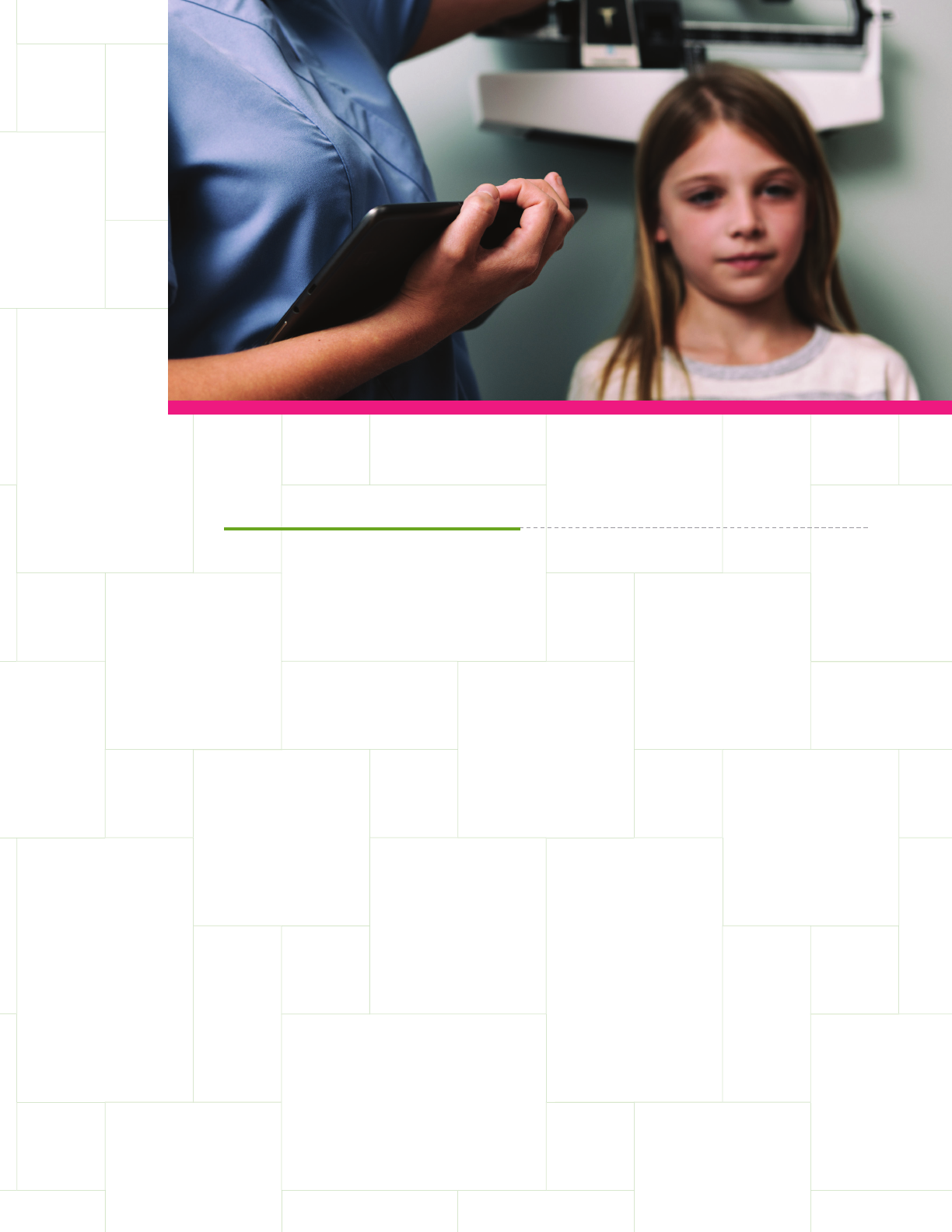
INTRODUCTION & RATIONALE
In 2011, confronted with a budget defi cit of more than $700 million, the School District of
Philadelphia (SDP) downsized its nursing staff by more than 100 school nurses.
1
Since then,
however, the district has made great strides in securing school nurse staffi ng. Most public
schools in the district now follow the American Academy of Pediatrics (AAP) recommendation
of one nurse for every building, and SDP increased the number of full-time nurses it employs
from 100 in 2011 to 265 in 2019.
SDP also invested substantial resources in
building a strong school health administrative
team, which includes the addition of a medical
director, nursing director, nurse educator and
nurse coordinator. In addition to these gains, SDP
has maintained strong community partnerships,
ensuring that all children have access to services
such as dental and vision care providers on-site at
schools throughout the school year.
In the midst of this progress, and per request by
SDP leadership, PolicyLab, a research center at
Children’s Hospital of Philadelphia, conducted an
evaluation and review of school health services
within Philadelphia and comparable districts
with the aim of delivering a comprehensive report
refl ective of the diverse health needs of SDP
students and the multiple stakeholders involved in
the provision of care for children in Philadelphia.
In order to accomplish this, we chose to leverage
the National Association of School Nurses’
(NASN) Framework for 21st Century School
Nursing Practice, a guiding structure for districts
seeking to achieve high-quality school nurse
practice.
2
The Framework aligns with the Whole
School, Whole Community, Whole Child (WSCC)
model that calls for a collaborative approach to
learning and health. According to WSCC, “central
to the framework is student-centered care that
occurs within the context of the students’ family
and school community.”
3
We categorized our fi ndings in this report using the
Framework’s fi ve overlapping principles: standards
of practice, quality improvement, care coordination,
leadership and community/public health.
4
6 IMPROVING SCHOOL HEALTH SERVICES FOR CHILDREN IN PHILADELPHIA
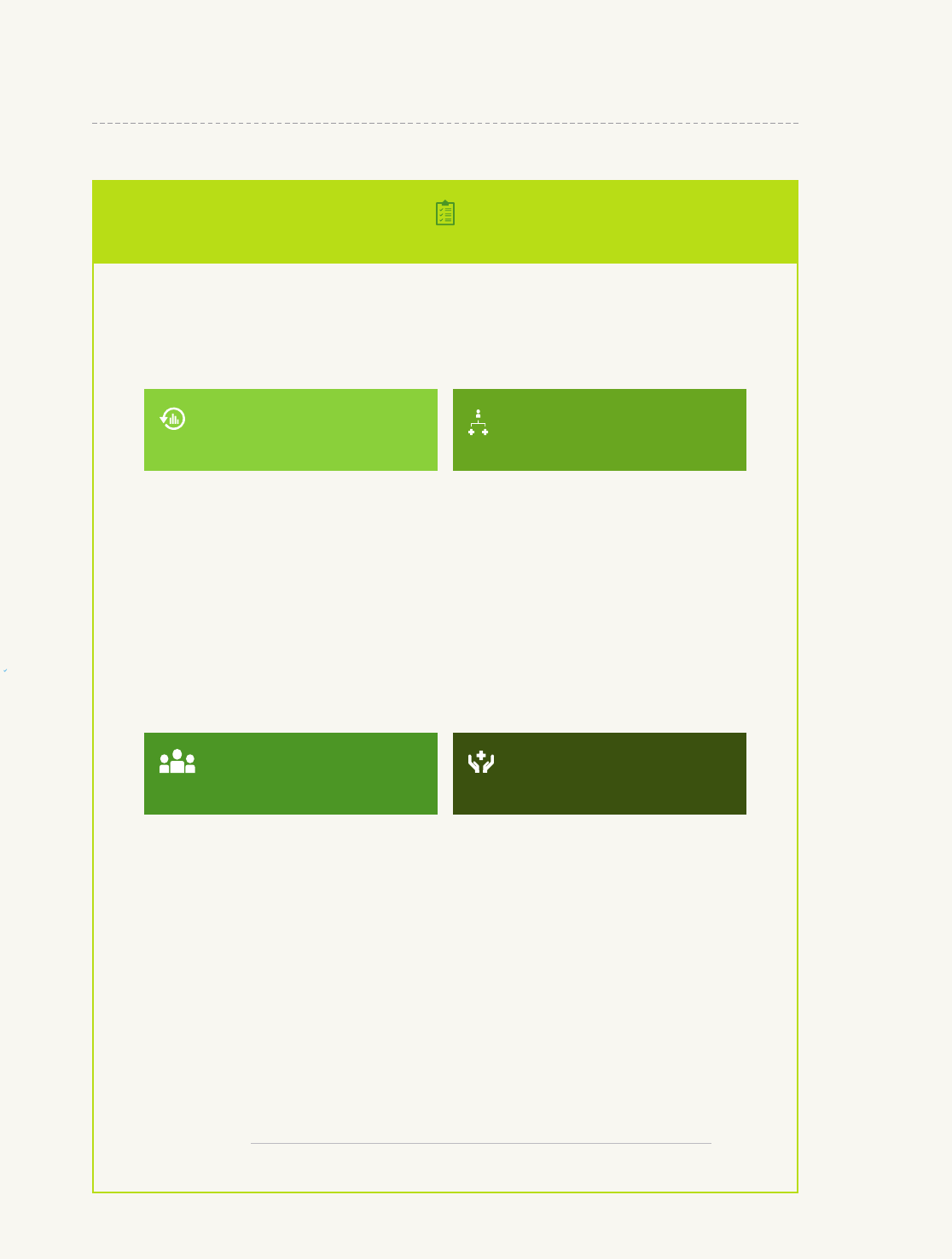
FRAMEWORK FOR 21ST CENTURY SCHOOL NURSING PRACTICE
™
Principles and accompanying practice components:
STANDARDS OF PRACTICE
• Clinical Competence
• Clinical Guidelines
• Code of Ethics
• Critical Thinking
• Evidence-based Practice
• NASN Position Statements
• Nurse Practice Acts
• Scope and Standards of Practice
QUALITY IMPROVEMENT
CARE COORDINATION
• Continuous Quality Improvement
• Documentation/Data Collection
• Evaluation
• Meaningful Health/Academic Outcomes
• Performance Appraisal
• Research
• Uniform Data Set
• Case Management
• Chronic Disease Management
• Collaborative Communication
• Direct Care
• Education
• Interdisciplinary Teams
• Motivational Interviewing/Counseling
• Nursing Delegation
• Student Care Plans
• Student-centered Care
• Student Self-empowerment
• Transition Planning
LEADERSHIP
COMMUNITY/PUBLIC HEALTH
• Advocacy
• Change Agents
• Education Reform
• Funding and Reimbursement
• Health Care Reform
• Lifelong Learner
• Models of Practice
• Technology
• Policy Development and Implementation
• Professionalism
• Systems-level Leadership
• Access to Care
• Cultural Competency
• Disease Prevention
• Environmental Health
• Health Education
• Health Equity
• Healthy People 2020
• Health Promotion
• Outreach
• Population-based Care
• Risk Reduction
• Screenings/Referral/Follow-up
• Social Determinants of Health
• Surveillance
ASCD and Centers for Disease Control and Prevention. Whole School Whole Community Whole Child: A Collaborative Approach
to Learning and Health. http://www.ascd.org/ASCD/pdf/siteASCD/publications/wholechild/wscc-a-collaborative-approach.pdf.
Published 2014. Accessed 2019.
EVALUATION REPORT | FALL 2019 7

PROCESS & METHODS
From January 2019 to July 2019, we conducted an intensive review of local and external district
school health systems, structures and operations. We reviewed documents, analyzed policies
and procedures, interviewed key informants and conducted an expansive literature review.
The literature review included position statements from professional organizations as well
as a review of academic publications using search terms related to school health and nursing
practice. An advisory committee of primary care physical, behavioral, and early childhood
experts informed our interview guides, document review protocols and policy analyses.
The internal district assessment consisted of a series of semi-structured interviews with various
stakeholders (listed on next page). External interviews with national school health leaders
identifi ed best practices and innovative examples among districts of comparable size and
student demographic. During our key informant interviews, we used standardized qualitative
interview guides developed by our interview team and PolicyLab pediatric health care content
experts, which addressed questions related to funding, data collection, behavioral health
services, care coordination, policies and procedures, professional development, evaluation and
family engagement. We recorded, transcribed and reviewed interviews for key themes. We then
used these themes and best practice standards to identify priority recommendations within each
section of this report.
8 IMPROVING SCHOOL HEALTH SERVICES FOR CHILDREN IN PHILADELPHIA

INTERVIEWS
SDP Oce of Student Health Service Administrators
• Irene Kratz, Nursing Director
• Natalie Mathurin, Medical Director
• Michelle Ovington, Financial Services Assistant Director
• Lauren Reagan, Nursing Coordinator
• Shannon Smith, Nursing Coordinator
SDP School Nurses
• Badia Brown, School Nurse
• Kathleen Celio, School Nurse
• Margaret Devine, School Nurse
• Melissa Platt, School Nurse
• Barbara Tiller, School Nurse
Physical Therapist
• Carolyn Szumal, Physical Therapist
SDP Oce of Prevention and Intervention
• Lori Paster, Deputy Chief, Prevention & Intervention
SDP Guidance Counselors
• Cynthia Moore, Guidance Counselor
• Iris Parkinson-Culbreth, Guidance Counselor
National School Health Leaders:
Washington, District of Columbia
• Kristen Rowe, Manager of Health Services, District of Columbia
Public Schools
• Danielle Dooley, Medical Director for Community Aairs and
Population Health, Children’s National Health System
• Desiree De La Torre, Director of Community Aairs and
Population Health, Children’s National Health System
Austin, Texas
• Tracy Spinner, Director of Health Services, Austin Independent
School District
OFFICE OF STUDENT
HEALTH SERVICES
The primary focus of this
assessment was on the Oce
of Student Health Services,
which manages oversight of the
following functions:
• School nurses
• Centers for Disease
Control and Prevention
(CDC) Promoting
Adolescent Student
Health (PASH) grant
• Central Level
Wellness Council
• Student Health
Advisory Council
EVALUATION REPORT | FALL 2019 9
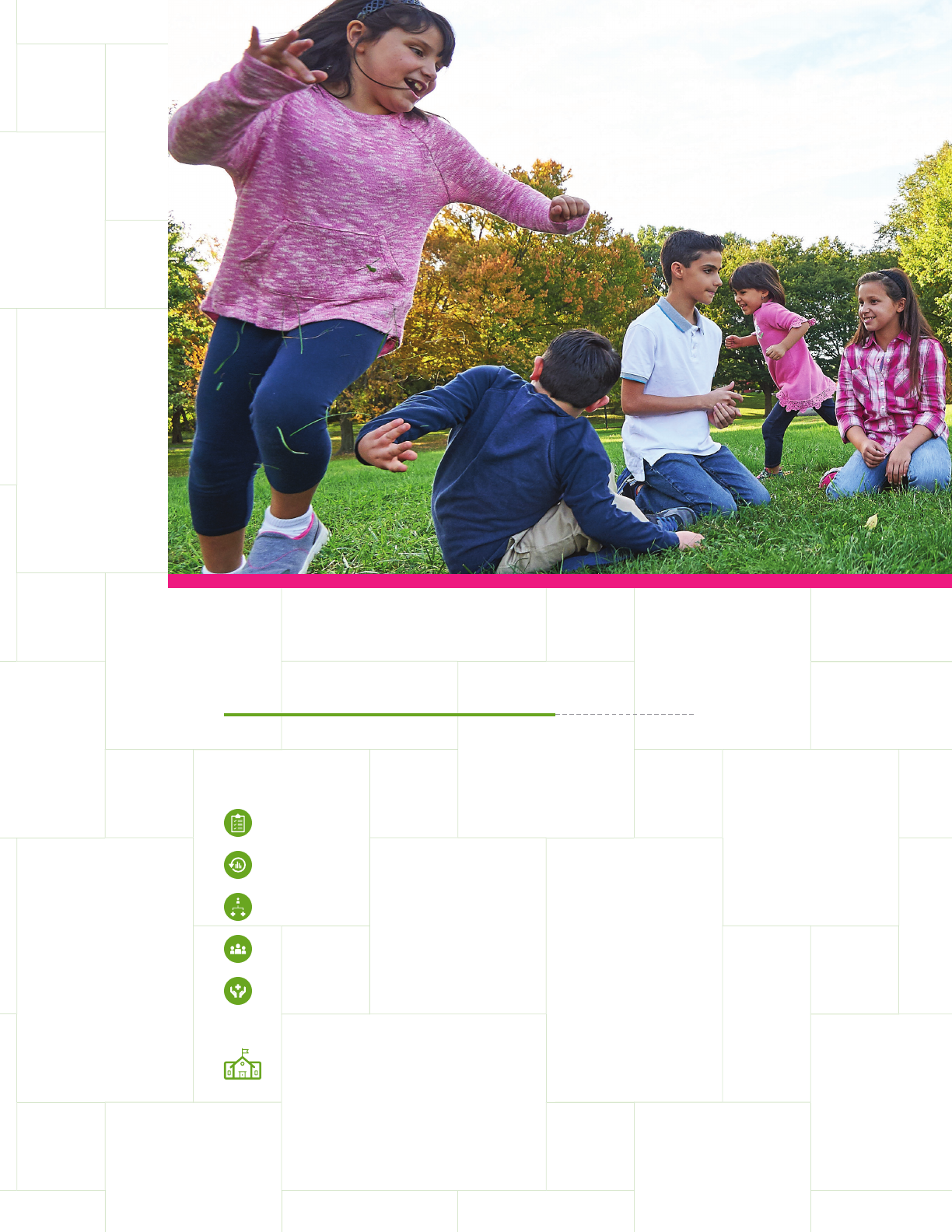
FINDINGS & RECOMMENDATIONS
The body of this report is organized using the following principles
of the NASN Framework for 21st Century School Nursing Practice:
STANDARDS OF PRACTICE
QUALITY IMPROVEMENT
CARE COORDINATION
LEADERSHIP
COMMUNITY/PUBLIC HEALTH
Denotes framework principle example from another school district
10 IMPROVING SCHOOL HEALTH SERVICES FOR CHILDREN IN PHILADELPHIA
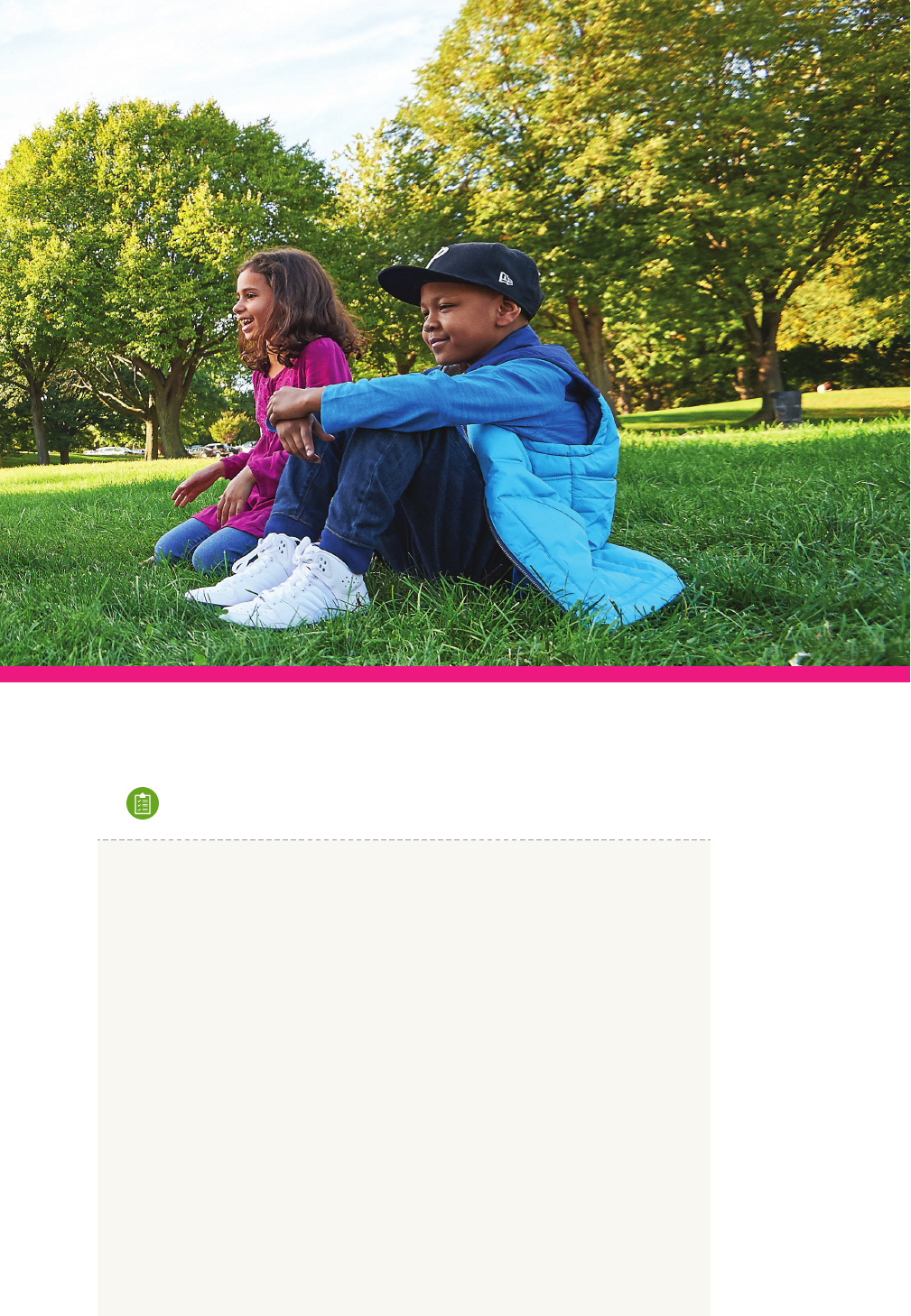
FRAMEWORK PRINCIPLE: STANDARDS OF PRACTICE
Standards of practice impact every aspect of school health services
as nurses and nursing leadership must remain up to date on both
clinical practice and policies. In this report, we highlight best practices
for school nurses with consideration of the numerous professional
organizations that issue position statements and policies aimed at
guiding school health services. For instance, in the Quality Improvement
section, we highlight important recommendations in the use of electronic
health records (EHRs), which aligns with the NASN position statement
on EHRs, and in the Community/Public Health Section, we discuss the
importance of enforcing policies for immunization compliance following
the Pennsylvania Department of Health school immunization policy and
CDC recommendations.
5–7
Best practices are reflected in each section
with additional resources for standards of practice available through
organizations such as NASN, the American Nurses Association, the
Nurse Practice Act, the CDC, the National Institutes of Health, the Food
and Drug Administration, the AAP and professional journals.
EVALUATION REPORT | FALL 2019 11
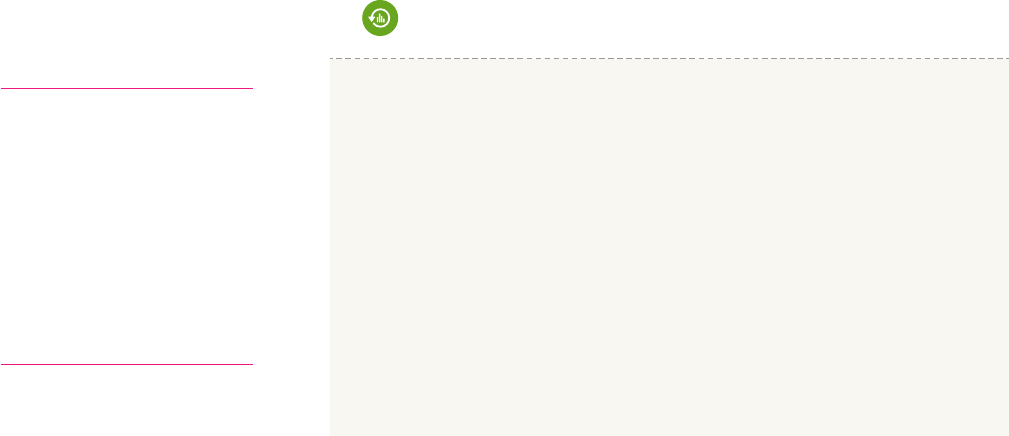
Data is the cornerstone of QI, and school nurse documentation of daily
activities is a crucial form of data collection. School nurse documentation
demonstrates the variety of roles and activities of school nurses, shows the impact
of nursing care on students’ health and identifies trends over time.
9
However,
standardization is critical for school nurse documentation to be actionable. When
districts are thoughtful about the data they choose to track and take steps to collect
and format this data in a consistent way, they are well prepared to aggregate data
across schools, identify trends and intervene appropriately.
10
Standardized data
means that every nurse across the district measures and captures the same data in
the same way.
At the individual-school level, uniform data collection could, for example,
track out-of-class time and student nurse oce visits. This could enable SDP to
monitor the use of school nurses and make quality improvements as needed in
teacher education for those who too frequently (or infrequently) send students
to the nurse or to intervene when students use the nurse’s oce for more than a
standard number of visits a year.
11
Data on student visits is particularly important
considering overutilization of the nurse’s oce could indicate underlying medical
issues. For example, “frequent flyers” who regularly come to the nurse for
unexplained headaches or stomach aches could indicate a referral to behavioral
health is necessary since somatizing children are significantly more likely than
their peers to have higher levels of depression and anxiety.
12
Not only does the literature emphasize the importance of data collection; this was
also an emerging theme during interviews. For example, interviewees indicated
a need for data collection fields within the current EHR to be more user-friendly
and for information to be more easily accessible. Additionally, interviewees noted
that the SDP EHR is not designed to provide aggregated data reports, instead
requiring long processes for requesting reports from the Oce of Information
Systems and the Oce of Research and Evaluation. Due to this limitation, nurses
and nurse leadership depend primarily on individual student reports accessible
via student health files, which does not require the tracking of health information
in a standardized way (e.g., referrals/concerns, behavioral health, most frequent
interactions). Finally, interviewees noted that they spend a substantial amount of
time locating data from multiple sources or systems and then manually inputting
data, which creates ineciencies and hinders standardization.
Quality Improvement
Recommendation Overview
• Quality Improvement
(QI) Initiatives
• Standardized Data Collection
• Electronic Health Record (EHR)
• Data Sharing
• Staffing Models
• Data & Evaluation for
Performance Appraisals
FRAMEWORK PRINCIPLE: QUALITY IMPROVEMENT
Quality improvement (QI) is an ongoing and systematic process that leads
to measurable improvements and outcomes. The NASN
Framework
aptly
describes QI as “the nursing process in action; assessment, identification
of the issue, developing a plan, implementing the plan, and evaluating
if the goals/outcomes are achieved.”
8
Creating infrastructure for data-
informed decision-making can help SDP better understand the need,
efficiency and impact of health services in real time to allow for necessary
adjustments. This section reviews how standardized data collection, data
sharing and data aggregation all contribute to a thoughtful QI program.
Additionally, we discuss the use of data to support staffing models and
performance appraisals.
12 IMPROVING SCHOOL HEALTH SERVICES FOR CHILDREN IN PHILADELPHIA

To maximize the eectiveness of data collection, NASN developed a
minimum set of standardized data points that school nurses can use to track
outcomes and inform best practices.
13
Areas of data collection recommended by
NASN include: school stang levels, students with chronic conditions and health
oce visits.
14
However, for districts to use this data eectively to improve student
outcomes, they must store information in a way that is organized, easily viewable and
protective of student privacy. EHRs are an essential data collection and storage tool,
with the capacity to manage data, provide outcome analysis and share data across
settings to optimize the coordination of care.
15
RECOMMENDATION: QUALITY IMPROVEMENT (QI) INITIATIVES
We recommend allocating resources to support an increased focus
on health service QI initiatives. QI resources are foundational for
data-informed decision-making for health initiative investments
and in building the necessary infrastructure for standardizing
and using data to improve the allocation of nursing resources and
eciency of service delivery.
RECOMMENDATION: STANDARDIZED DATA COLLECTION
We recommend prioritizing several key data points for standardized
tracking that the district can use to inform QI initiatives.
NASN states that EHRs are a critical tool for not only eectively and eciently caring
for individual students, but also for monitoring student population health as a whole.
16
When properly utilized in the school setting, districts can leverage EHRs to better
understand the health needs of students, initiate quality improvement initiatives,
and improve community and family health outreach. A well-developed EHR can help
schools track their progress on improving health indicators such as vaccination rates,
and can oer quick data aggregation to improve clinical decision-making. Yet, many
educational or student data management systems are not sucient for health data
collection as these systems do not provide opportunity for documentation using medical
terminology and are often not interoperable with community-based health records.
17
Due to this limitation in student management systems, the Austin
Independent School District (AISD) developed their own EHR to track
attendance across schools as well as the most common illnesses and
injuries. They use this data to conduct trend analyses of incidents. AISD
is able to monitor immunization compliance and rates and to better
understand where children with complex health needs are clustered across
the district. AISD school nurses document their interactions directly in
the EHR, allowing them to quickly identify and act on changes in student
health trends. For example, at times when there has been an influx of
influenza, school nurses can identify the trend within 24 hours and take
actionable precautions, such as requesting that housekeeping conduct a
deep cleaning of surfaces.
AISD has also used their EHR data on a community level by monitoring kids
who initiate contact with the nursing oce due to breathing diculties.
AISD shares permissions with the local hospitals’ EHR and can track
diagnoses, action plan status, if patients are adhering to the plan and how
many times per day a student accesses their rescue inhaler. Nurse leadership
compares these numbers against community data to determine what is
usual and customary in terms of population health for that community.
EVALUATION REPORT | FALL 2019 13

A significant benefit of an optimized EHR is the ability to seamlessly view
and share data with external providers and agencies to identify trends and
improve students’ access to health services. The AAP has emphasized the
importance of collaboration between school nurses, school physicians, school sta,
families, and external pediatric providers to improve the health of children both
in school and in the community.
18
Data sharing is a critical tool for facilitating this
collaboration and, ultimately, building integrated health systems. On the school
level, data sharing with principals or the board gives administrators a clear picture
of students’ health needs and can inform decisions around stang and financing
school health programs.
19
More broadly, sharing data with external health
partners creates a more robust and triangulated view of community trends and
can help leaders identify areas in need of targeted health promotion activities.
20
In Philadelphia, nurses and nurse leadership identified an opportunity for more
readily available data in order to track trends and build models for sharing with
internal and external partners.
Washington D.C.’s public school system is an example of how school
districts can partner with state agencies to improve coordination and
service delivery. D.C. Public Schools (DCPS) developed a data sharing
agreement with the Department of Health and D.C.’s Medicaid agency.
By cross-referencing school enrollment data with Medicaid enrollment
status, dates of last well-child, dental visits, and immunization data
the three agencies have been able to identify schools with the highest
Medicaid enrollments and service utilization gaps.
21
These schools
receive targeted outreach in the form of education events and resources
for principals and school nurses to use to promote health and wellness.
22
The Department of Health Care Finance has also used the data to provide
“school health snapshots” to managed care organizations, highlighting
service usage among their DCPS-enrolled beneficiaries.
23
One challenge of data sharing is assuring that all participating data systems are
compliant with privacy requirements. The Health Insurance Portability and
Accountability Act (HIPAA) and the Federal Education Rights and Privacy Act
(FERPA) govern the release of identifiable health information and educational
records, including those collected by a school nurse. To comply with these laws,
EHR administrators must get parental or guardian permission to share student
health records and develop agreements with external providers to ensure that
student data remains confidential.
24
Oftentimes, this requires the assistance of a
legal or compliance team to review workflows ensuring EHR administrators are
meeting privacy standards.
25
On an individual level, SDP school nurses consistently expressed a desire to more
easily share information with students’ medical providers as pulling information
from student registration files can produce incomplete documentation.
Additionally, parents may not understand the depth of their child’s medical
condition, making it dicult to provide care to students without all the necessary
health information. During our interviews, nurses repeatedly identified HIPAA
and FERPA as barriers to coordination of care.
One potential solution is in simplifying and/or condensing legal consents so that
EHR administrators can design one blanket consent form for a myriad of medical and
treatment needs. Additionally, districts could create an online portal where parents
can electronically provide consent, simplifying the process. SDP could partner with
local health systems to use the site as a clearinghouse for electronic HIPAA and
FERPA signatures. This could provide easy access to needed signatures for SDP,
health systems and parents alike. Ultimately, interoperable EHRs or alternative
contractual agreements to allow for easy exchange of information are ideal.
14 IMPROVING SCHOOL HEALTH SERVICES FOR CHILDREN IN PHILADELPHIA

RECOMMENDATION: ELECTRONIC HEALTH RECORD (EHR)
We recommend a careful assessment of the capabilities of the current
EHR and, dependent on the outcome of that review, consideration of a
contract with a technical assistance provider for system improvements.
Dashboarding capabilities are an important component to include in
system improvements, as the ability to quickly view aggregate data is a
crucial function for health services. This may be accomplished through
the EHR or may require additional applications.
RECOMMENDATION: DATA SHARING
We recommend a review of legal and technical considerations to enable
participation in interagency data sharing or integration relationships
to improve coordination and service delivery across child-serving
systems. As a fi rst step, simplifying legal consents and the creation of an
online portal for HIPAA and FERPA consents would serve as a building
block to facilitate future data sharing arrangements.
Districts can also leverage school health data to support appropriate
sta ng models. There are numerous studies showing consistent nurse
sta ng levels are linked to improved access to care for students.
26
Research also
demonstrates that schools with lower nurse-to-student ratios are associated with
better student attendance and academic success.
27
Our interviews with SDP nurses indicated that sta ng levels can be problematic as
schools have a wide range of student population numbers and needs. Another challenge
to SDP’s current sta ng structure is nurse absenteeism, which can substantially lower
nurse sta ng levels across the district (during one day of interviews, 22 nurses called
out sick with only 4 available substitutes for the day). Interviewees also highlighted a
need for coverage during school-sponsored fi eld trips.
The district currently uses a cohort model to respond to limited numbers of
nurses and to address unlicensed professionals administering medications. The
cohort model works by placing responsibility on school nurses to coordinate and
cover for one another during times when a colleague is out of the building. For
instance, if a nurse calls out sick, nurses in the same cohort coordinate to cover
schools at certain times/hours based on need (e.g. insulin administration, asthma
treatments, etc.). Additionally, some nurses rotate through multiple schools
throughout the week.
Since 2011, SDP has made great strides in school nurse sta ng. Most district public
schools are following the AAP recommendation of one nurse for every building,
and ratios for non-public schools are close to the previously set standard of one
nurse for every 750 students. However, it is worth noting that as of 2015, NASN has
moved away from nursing ratios and toward a recommendation suggesting that
districts determine school nurse workloads annually taking into consideration
student and community health data.
28–29
As children with complex health and social needs are increasingly educated in the
mainstream classroom, school nurses play a major role in the case management,
care coordination and day-to-day health interventions required for these children
to succeed in school.
30
Nurses in Philadelphia indicated that stabilizing health
care needs for students with high social acuity can be particularly complicated and
time-consuming. For instance, SDP nurses face signifi cant barriers reconnecting
students in out-of-home placement to services when the foster family may not have
the child’s insurance information or when a prescription runs out. By using data to
A signifi cant
benefi t of an
optimized EHR
is the ability to
seamlessly view
and share data
with external
providers and
agencies to
identify trends
and improve
students’
access to health
services.
EVALUATION REPORT | FALL 2019 15

analyze school enrollment, illness and injury contacts, number of students under
ongoing case management, and health care access in the surrounding community,
schools can build models that accurately predict their nursing needs and allow for
e ective distribution of resources.
AISD has been a national leader in utilizing acuity analysis to
eff ectively distribute nursing resources among the district’s
schools.
31
In its analysis, AISD weighs a combination of medical factors,
such as number of students with complex medical conditions, alongside
community factors, such as economic disadvantage among students.
32
Additionally, the Wake County Public School System (WCPSS)
in North Carolina uses acuity analysis to establish a tiered model
through which the administration evaluates schools in the district and
sta s them at three levels depending upon student acuity/condition
and social determinants (e.g., chronic illness, medication, poverty,
language barriers, access to care). Similar to these other districts, using
community and student data to perform annual analyses could assist
SDP administrators in meeting both student and sta ng needs by
allotting nurses based on acuity instead of enrollment.
RECOMMENDATION: STAFFING MODELS
We recommend the use of community and student health data to
build models that accurately predict the district’s nursing needs
and allow for e ective distribution of resources. Additionally, to
respond to nurse absenteeism, we recommend that the district use
its own data to determine an appropriate number of substitute
nurses for full-time employment.
Evaluation is the fi nal step in the QI process. Nurse and nurse leadership should
utilize data on an ongoing basis to assess the impact of their nursing interventions on
student outcomes and determine whether processes are appropriate and e ective.
Districts should also use data for performance appraisals, incorporating
both nurses’ assessment of their own work and evaluations by a supervisor.
When evaluating nurses’ performance, supervisors should take into account the
nurses’ use of data-informed decision making. For example, a nurse may track o ce
visits and recognize a cohort of students who are accessing the nurse’s o ce far more
frequently than others. Using this data a school nurse can make determinations
about intervention (e.g., referrals to guidance or behavioral health assessment, or
discussion with a teacher). To use data in this way, it is imperative that the nursing
director and coordinators are involved in the supervision of school nurses. This
requires supervisory certifi cations for health services leadership so that the nursing
director and coordinators can directly oversee clinical supervision of school nurses.
Currently, school principals are fulfi lling this function.
The American Nursing Association and NASN recommend that all school
nurses receive clinical supervision from a registered nurse with knowledge of
school nursing practice.
33
Pennsylvania does not prohibit non-nursing sta
from supervising school nurses; the state only requires supervisors to have
As children with
complex health
and social needs
are increasingly
educated in the
mainstream
classroom,
school nurses
play a major
role in the case
management,
care coordination
and day-to-
day health
interventions
required for
these children
to succeed
in school.
16 IMPROVING SCHOOL HEALTH SERVICES FOR CHILDREN IN PHILADELPHIA

an administrative credential.
34
While school administrators can continue to
supervise non-nursing tasks such as communication skills, team collaboration or
enforcement of school and district policies, non-clinical sta are not suciently
qualified to evaluate clinical nursing competency; districts should shift this
specific responsibility to nurse leadership.
35–36
Students benefit when nurse
supervisors can eectively evaluate school nurses’ responses to health care
needs and assure attention to best practices and evidence-based protocols.
Interdisciplinary evaluation and supervisory processes, inclusive of nurse
leadership and administrative sta, can also help non-clinical leadership better
understand the expansive responsibilities of school nurses.
37–38
RECOMMENDATION: DATA & EVALUATION FOR
PERFORMANCE APPRAISALS
We recommend that SDP fund supervisory certifications for health
services leadership so the nursing director and coordinators can
directly oversee clinical supervision of school nurses. This would
allow supervisors to take into account the nurses’ use of data-informed
decision-making as part of performance appraisals.
EVALUATION REPORT | FALL 2019 17
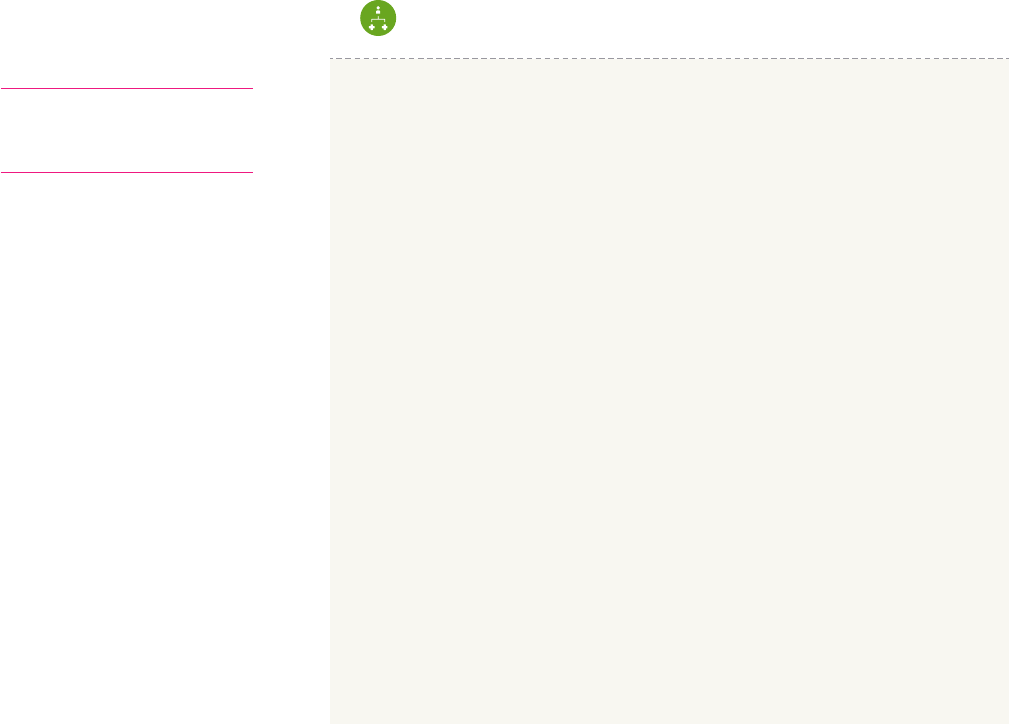
When districts are intentional in defining the role of nurses within the larger care team,
it can result in improved health outcomes for students. For example, for a student with
asthma, a school nurse may develop the child’s emergency action plan, teach school
personnel how to respond to emergencies, work with families to reduce asthmatic triggers
and teach students skills to self-manage their condition.
40
However, as evidenced by this
example, school nurses are tasked with a broad range of responsibilities beyond direct
care, including surveillance, chronic disease management, emergency preparedness,
health education, and data and records management.
41
Additionally, as chronic conditions
such as diabetes and asthma become more common and children with complex health
and social needs are increasingly educated in the mainstream classroom, school nurses
are increasingly charged with managing conditions that were previously handled in acute
care, such as tube feedings, insulin administration and emergency injections.
42
The many demands placed on a nurse require that school districts maintain
appropriate stang levels to ensure there is adequate personnel to complete
required tasks. In the QI section, we suggested the use of acuity analyses to help SDP
move away from ratios and toward the use of data to better determine needs. We also
advocated that SDP hire full-time nurse substitutes as our interviewees noted that
nursing absenteeism and lack of coverage during school-sponsored field trips lowered
nurse stang levels across the district. A third stang option is the use of delegation of
non-medical tasks to qualified health assistants.
Delegation of some nursing tasks to a qualified health assistant can help school
nurses address specific complex student health care needs while balancing other
responsibilities.
43
Health assistants are unlicensed professionals with prior health care
experience (such as EMT training), who perform basic tasks under the direct supervision
Care Coordination
Recommendation Overview
• Nurse Delegation
• Collaborative Care
FRAMEWORK PRINCIPLE: CARE COORDINATION
The broad principle of care coordination incorporates many of the daily tasks
school nurses perform and includes practice components such as student-
centered care, direct care, chronic disease management, collaborative
communication and nursing delegation.
39
During our interviews with staff,
it was clear that SDP nurses regularly engage in many of these tasks. For
example, throughout SDP, nurses are providing direct care in the form of
routine treatments, screenings, medication administration, and responses to
acute and urgent health care needs. School nurses also spoke about chronic
disease management, highlighting asthma, seizure disorders and Type 1
diabetes as critical health concerns for Philadelphia’s student population.
Nurses are well-positioned to identify children who are not achieving
their optimal level of health or academic success due to acute or chronic
medical conditions, and can develop and implement care plans that give
these students the best health, academic and quality-of-life outcomes.
Implementing structures to facilitate care coordination, such as
interdisciplinary care teams and nursing delegation protocols, can help to
manage communication between health professionals and families and
improve the efficiency of care. This section discusses coordination and
communication among partners in school health and the role and scope of
nursing responsibilities.
18 IMPROVING SCHOOL HEALTH SERVICES FOR CHILDREN IN PHILADELPHIA

of the school nurse.
44
While health assistants cannot legally perform medical tasks, their
assistance with charting, record keeping and health o ce management is critical for
managing a school nurse’s workload. Health assistants can also make connections with
primary care and other external stakeholders, which nurses in Philadelphia reported as
a particular challenge when coordinating care for medically complex children. Nurses
can conduct this delegation in-person or virtually using telehealth.
AISD implemented a free, HIPPA-compliant video software called VSEE
that allows clinical assistants staff ed across the district to connect with
school nurses to diagnose and assess students over video conference. For
example, if a child comes to an assistant with a rash on their arm, the clinical
assistant can video conference with a nurse for assessment and diagnosis.
Virtual delegation can be particularly useful in districts where nurses rotate between
schools because a clinical assistant can be positioned at a school and maintain access
to the school nurse, no matter where the nurse is located. Virtual delegation can also
be utilized directly by nurses to video conference with doctors, which can reduce
unnecessary dismissals home or permit a parent to have medication prescribed
without an additional medical appointment.
45
While nursing assistants can be benefi cial in helping nurses with non-nursing
functions, it is unsafe and unwise to use health assistants in place of nursing expertise.
This is unlikely to be an issue as Pennsylvania code is fairly stringent regarding what
a school nurse is permitted to delegate to unlicensed personnel; however, the Good
Samaritan act does allow nurses to train unlicensed nursing assistants to administer
emergency medications, such as epinephrine auto-injectors and rescue asthma
inhalers.
46
Nurse delegation is a worthy consideration as many of the recommendations
made throughout this report will require substantial e ort on behalf of the school nurse
who is already concerned about how di cult it can be to accomplish all that is asked.
RECOMMENDATION: NURSE DELEGATION
We recommend that SDP delegate non-medical tasks to qualifi ed
nursing assistants to support school nurses in prioritizing
responsibilities of addressing complex health care needs while
balancing other responsibilities such as screening, medication
administration, and response to acute and urgent health care needs.
Another important factor to consider when it comes to care coordination is
interdisciplinary care teams within each school. This allows for professionals
from across disciplines—including behavioral health providers, counselors, climate
managers, special education liaisons and others—to holistically address students’
health, academic and social needs.
SDP’s monthly tier meetings help facilitate this process by bringing a diverse set of
district employees together to discuss school-wide and classroom initiatives aimed
at identifying and implementing targeted interventions. The inclusion of nurses
in these meetings in a standardized way across the district would bring important
medical context to academic or behavioral problems. For example, nurses can identify
if a child struggling in the classroom has a new or recent diagnosis and lacks access
to medication or if a child frequently visits the nurse’s o ce and could benefi t from
targeted interventions; this could ensure that all related sta are updated and receive
the same information. During these meetings, school nurses can also provide critical
perspectives on health promotion, disease prevention and care coordination. Finally,
SDP could consider how it can alter or combine the current tier meetings to create
school wellness committees, which are used in districts across the country.
Nurses are
well-positioned
to identify
children who are
not achieving
their optimal
level of health
or academic
success due
to acute or
chronic medical
conditions, and
can develop and
implement care
plans that give
these students
the best health,
academic and
quality-of-life
outcomes.
EVALUATION REPORT | FALL 2019 19
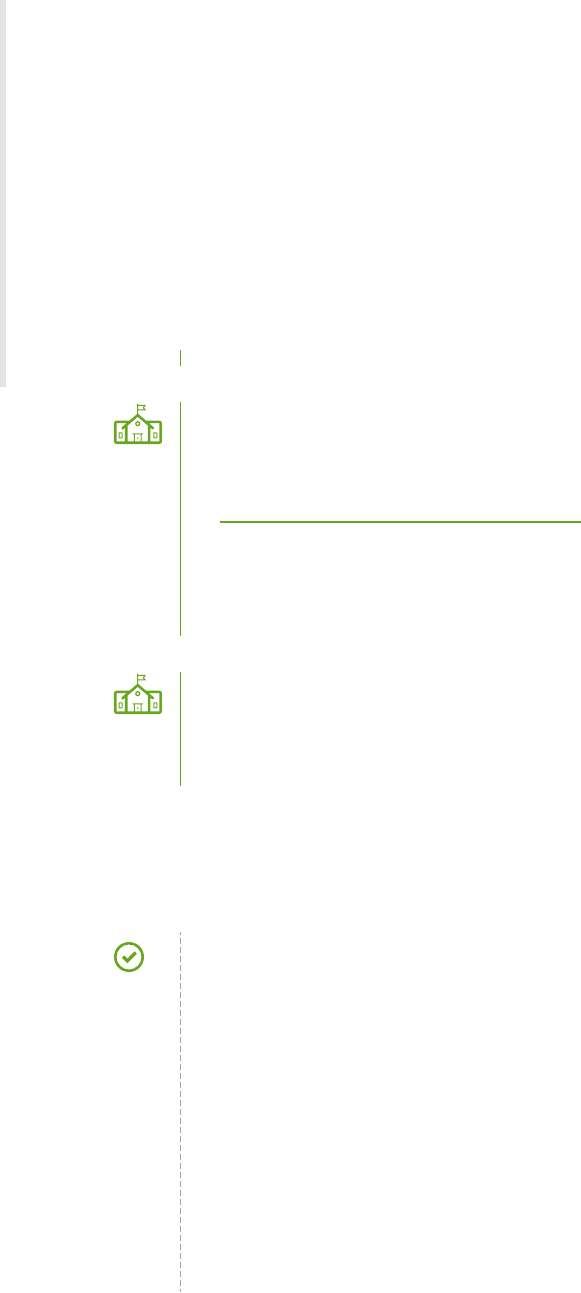
Another way that districts can ensure a collaborative approach to health
services is by providing information to sta that clearly describes the health
services and supports, including physical and behavioral health, available
for students throughout the district. Beyond their programs and role, SDP sta
were often unsure of other health services being delivered within their schools and
the district at-large, and nurses endorsed having limited involvement/collaboration
with behavioral health services in particular. One thing that may contribute to this
is that SDP health-related o ces are currently separated into di erent departments,
which can create barriers to information sharing. For example, health and physical
education, food services and health programming, such as Eat Right Philly, all relate
to health, but are not unifi ed under a common department or o ce. This separation
makes regular and collaborative communication a top priority—an issue that SDP
nurses raised throughout our interviews. There are several possible solutions:
• Realignment of health service-related departments within SDP
• A resource guide, which can serve as a tool for sta tasked with
coordinating care, and is also informative for anyone seeking to
understand the work originating from this o ce. The Los Angeles
Unifi ed School District (LAUSD) off ers a useful example in their
Health and Human Services Resource Guide, which outlines
available services, resources and partnerships under the Health
and Human Services umbrella and includes program descriptions,
types of service and contact information for each department
(e.g., Department of Diversity and Equity, pupil services, school
mental health and restorative justice.)
47
• A principal’s guide, which is a potentially more granular way to
educate sta and principals. DCPS created a principal’s guide
to school health, which includes descriptions of key concepts
regarding laws and regulations and dictates many of the
procedures that staff must follow as a result.
All of these serve as useful examples for how principals, colleagues and other
departments can better understand health services work and more clearly
delineate points of connection, communication and collaboration.
RECOMMENDATION: COLLABORATIVE CARE
We recommend that SDP ensure a collaborative approach to health
services by:
• Assessing the current organization of health service-related
departments and programming and aligning where appropriate
using the Whole School, Whole Community, Whole Child (WSCC)
as a guide
• Creating a resource guide that spans physical and behavioral health
services and provides information to sta that clearly describes the
available health services and supports
• Emphasizing nurse participation on interdisciplinary care teams
and considering the creation of school wellness committees using
the current tier structure
Interdisciplinary
care teams allow
for professionals
from across
disciplines to
holistically
address students’
health, academic
and social needs.
20 IMPROVING SCHOOL HEALTH SERVICES FOR CHILDREN IN PHILADELPHIA
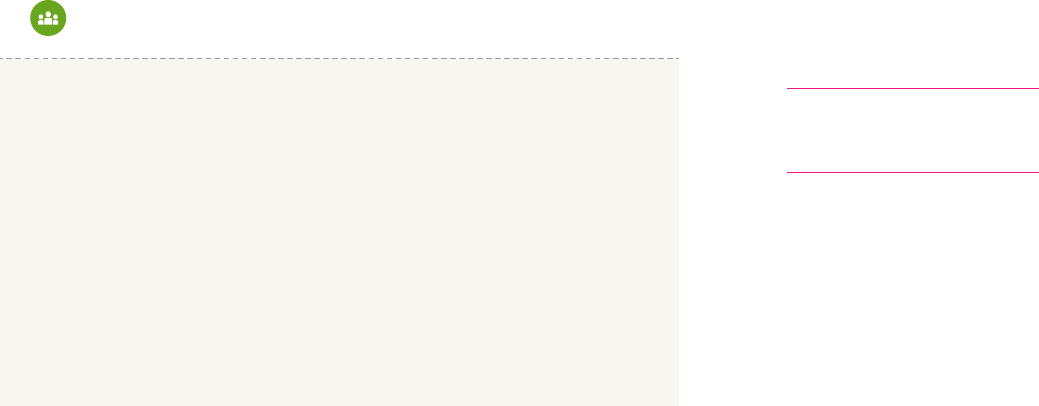
Clear and eective policies and procedures are integral to school health
services. Policies not only inform and support school personnel, but reassure key
stakeholders that schools are addressing health and safety issues.
49
Throughout
interviews, school nurses were inconsistent with their understanding of health
services policies. Nurses often referenced state mandated requirements when
asked about district-wide policies and procedures, and some interviewees
indicated that current policies and procedures are significantly outdated with
reference to a policy manual last updated in the 1990s. Policies can play a major
role in changing school culture; therefore, it is essential that school nurses have a
readily available policy manual including a description of the policy, procedural
steps to implement the policy, a method of tracking the implementation of the
policy and an eective way to enforce the policy.
School nurses and nurse leadership are vitally important to the development
and implementation of health policies, programs and procedures, and should
be included in the development of policies specific to their role.
50
Staying up
to date on relevant research, position statements and professional education is one
of the key roles for nurse leadership and ensures that policies are reflective of best
practice.
51
School nurses are also best-positioned to ensure that school health policies
align with state and federal regulations. Finally, nurse leaders can utilize health
services data to recognize trends or issues that provide opportunities for policy
development. For instance, the rate of epinephrine administration for students
who are undiagnosed with an allergy could prompt a policy recommendation that
requires a stocked supply of epinephrine in each building.
52
Without including feedback from those trained and experienced in school nursing,
administrators can enact policies that are overly cautious or in direct violation
to nurse recommendations. For example, the Oce of Safety has a policy that
requires school personnel to call an ambulance for all students who are found to
have smoked marijuana or have been sprayed with pepper spray, rather than having
the nurse first evaluate the student to determine the appropriate need for care.
FRAMEWORK PRINCIPLE: LEADERSHIP
Leadership is an essential mindset for school nurses. According to
NASN, as the only medically trained professional in the school setting,
school nurses are well-positioned to take a leadership role, specifically,
in the development and implementation of health policies, programs,
and procedures.
48
This ensures the centrality of health services in the
educational setting, and is a best practice in terms of defining the
structure of health service programming and providing guidance for
staff in delivering optimal care. This section will address both policies/
procedures and professional development, two activities that are
closely related and represent key components in nursing leadership.
Leadership
Recommendation Overview
• Policies & Procedures
• Professional Development
EVALUATION REPORT | FALL 2019 21
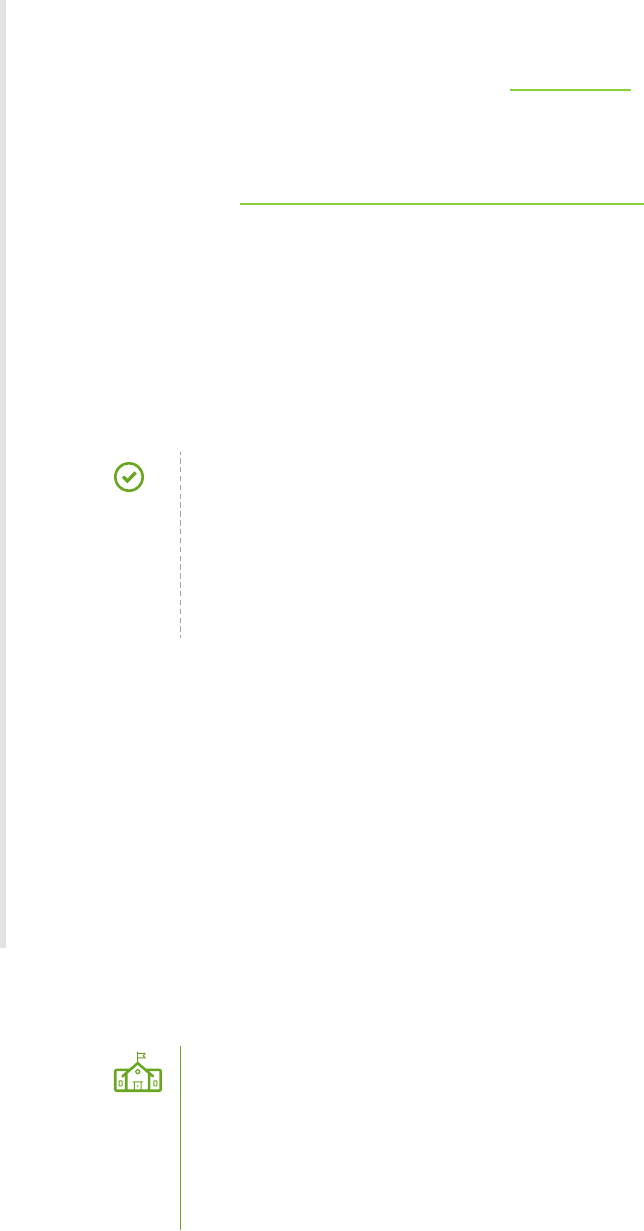
There are several online tools that SDP could fi nd useful as it considers revisions to
its policy manual:
• An online course designed by the AAP via the TEAMs project. This resource
o ers a guide to school districts as they plan and implement health service
improvements. The course highlights the development of health service
policies and protocols and o ers guidance on policy development.
• The CDC’s School Health Policies and Practices Study (SHPPS). This national
survey covers student health records, school entry requirements, required
immunizations, procedures for student medications and more. It could be
a useful starting place for developing a framework of needed policies and
procedures.
• The Central Level Wellness Committee, newly led by the O ce of Student
Health Services. This body can serve as a useful resource in ensuring that
policies are developed and revised in accordance with best practice and with
input from a diverse audience.
RECOMMENDATION: POLICIES & PROCEDURES
We recommend that school nurses have a readily available policy
manual including descriptions of the policies and procedural steps
needed to implement. Additionally, we recommend engagement from
all necessary stakeholders in policy creation. SDP should also utilize
the Central Level Wellness Committee as a venue for collaborative
communication regarding nursing practice and procedure.
Professional development is another important consideration as professional
development and networking opportunities are infrequent. School nurses often
work in isolation, sometimes as the sole health care provider in a building caring
for students with a broad scope of health care needs.
53–54
Professional isolation in
the school setting can limit nurses’ exposure to tools or changes in care practices,
making education an important priority.
55–56
Additionally, professional development
can ensure that nurses are aware of new or updated policy and procedures and
that they have the knowledge and skills to carry them out. During sta interviews,
nurses highlighted the intention to hire a nurse educator to support professional
development and provide personalized performance coaching and mentorship.
To support this new role, SDP may consider providing professional development
resources so the nurse educator can attract speakers who can grant continuing
education units (CEUs) or is able to teach continuing education classes themselves,
which could include access to e-learning software or videoconferencing capabilities.
Utilizing online learning modules can be an effi cient way to get
nurses the education they need, when they need it. AISD uses the Safe
Schools Platform to automate sta training. This platform allows the
district to purchase required trainings, such as basic illness and injury,
suicide prevention, anaphylaxis and medication management, while also
developing their own. With this platform, the district can be responsive to
both regulations and the interest of their nurses. It also allows the district
to provide trainings on an ongoing basis throughout the school year.
Professional
isolation in the
school setting
can limit nurses’
exposure to tools
or changes in
care practices,
making
education an
important
priority.
Professional
development
can ensure
that nurses are
aware of new or
updated policy
and procedures
and that they
have the
knowledge and
skills to carry
them out.
22 IMPROVING SCHOOL HEALTH SERVICES FOR CHILDREN IN PHILADELPHIA
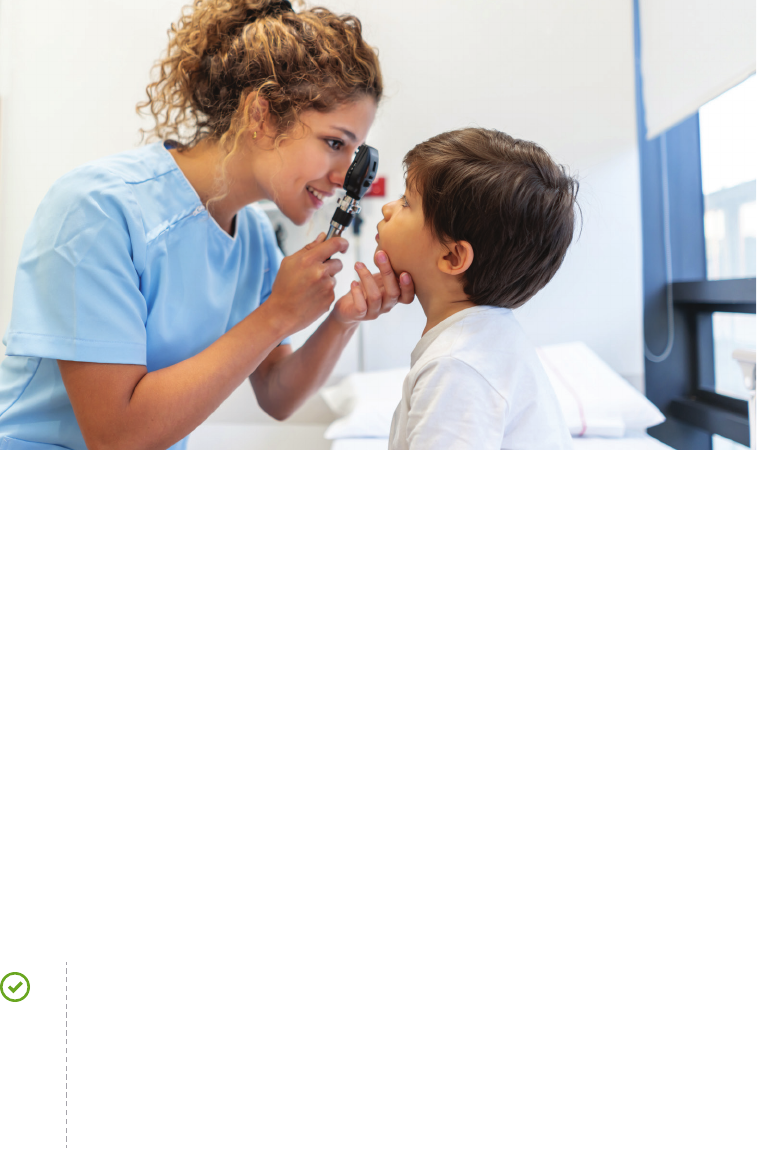
Another important factor to consider when developing training for nurses
and other sta members is the need for cross training in behavioral health.
School nurses are often the first to interface with students experiencing behavioral
and mental health challenges, including bullying, school phobia, anxiety, and stress-
related physical symptoms such as stomach pain and headaches. It is recommended
that school nurses and behavioral health professionals cross train to learn about each
other’s fields and better understand the overlap between physical and behavioral
health and the impact of chronic medical conditions on psychosocial functioning.
District-led training should oer mental health topics to school nurses, including
eective responses to suicidal concerns, behavioral health crisis management,
indicators of behavioral health problems, anxiety and depression. School nurse
training should be trauma-informed and culturally responsive.
57–58
The WSCC approach recommends that schools and communities have shared
learning experiences to develop common terminology and approaches to best meet
the needs of students.
59
Using an online platform is an eective way to ensure that
diverse audiences have access to relevant training materials.
RECOMMENDATION: PROFESSIONAL DEVELOPMENT
We recommend the allocation of resources for professional
development activities to include visiting speaker presentations
with continuing education units (CEUs) and/or the procurement
of software for e-learning or videoconferencing capabilities.
Additionally, we recommend routine cross-training for school
nurses and behavioral health professionals.
EVALUATION REPORT | FALL 2019 23
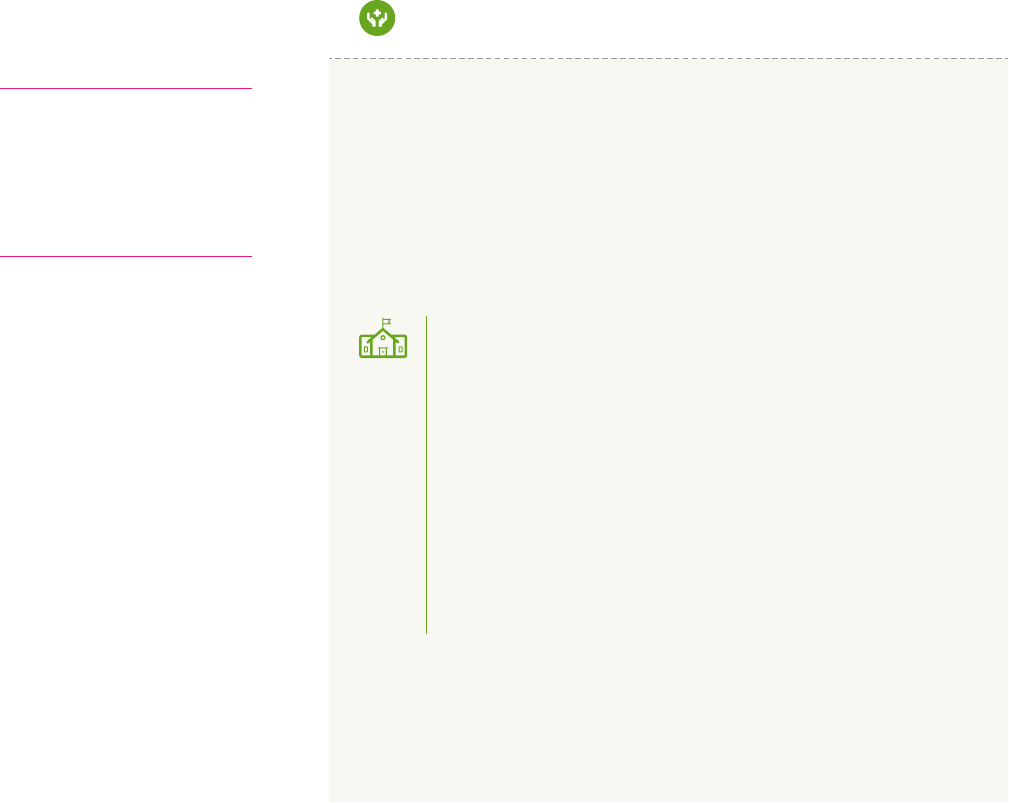
Throughout interviews, there was wide concern regarding immunizations
and the lack of school entry requirements.
61
Immunizations are a critical public
health intervention as they help to protect the health of the entire community.
High percentages of unvaccinated individuals can lead to local outbreaks and
spread contagious illnesses to vulnerable populations, including those who cannot
be immunized for age or medical reasons.
62
School nurses play a significant role in
surveillance and outreach eorts and can make a substantial impact on the rates of
compliance within communities.
It is NASN’s position that promotion of immunizations is central to the public health
focus of school nurses and that school nurses are well-positioned to create awareness
and influence action.
63
School nurses play an important role in risk reduction by
providing strong recommendations and addressing misconceptions through outreach
and education. Evidence-based immunization strategies include hosting vaccination
clinics in schools, providing vaccine education, sending reminders about vaccine
schedules, and using state information systems for accessing and sharing accurate
information with families who may not have access to up-to-date records.
64
One study, in a Northern Indiana High School, found that using a three-step, nurse-
initiated process to increase immunization compliance was highly successful. In the
first step, nurses sent letters home to notify parents who were not in compliance with
state law. They followed this up with a second letter providing information from the
Community/Public Health
Recommendation Overview
• Immunizations
• Health Education/
Parent Engagement
• Routine Screening/
Population-based Care
FRAMEWORK PRINCIPLE: COMMUNITY/PUBLIC HEALTH
School nurse practice is grounded in community and public health.
Throughout interviews we heard how public health concerns impact
a school nurse’s day-to-day work, and the health risks that students
face due to environmental exposures both at home and at school.
Some nurses spoke about breathing difficulties and the environmental
concerns that contribute to the broader issue, including exposing
children to mold, rodents or asbestos.
Interviewees also indicated a desire to track data to better
target population-based care. AISD has been intentional
about this work by creating geographic information system
(GIS) maps that layer information collected by school nurses.
Using this data they are able to determine by geographic
location which schools have the highest rates of asthma.
They identified the I-35 corridor as a problematic area, so the
district installed improved HVAC filters in the schools with
closest proximity. This is a useful example of how school
health services can expand their focus beyond the individual
student to populations with similar health concerns.
Ultimately, school nurses play a significant role in population health
through efforts at disease prevention and health promotion, two core
functions of public health.
60
In this section, we highlight several key
disease prevention and health promotion activities.
24 IMPROVING SCHOOL HEALTH SERVICES FOR CHILDREN IN PHILADELPHIA

health department about needed vaccinations, the importance of disease prevention
and contact information for appointments. If needed, nurses sent a third letter home
coupled with a phone call to parents. All communications included exclusion dates and
an explanation of what exclusion means. Prior to this intervention, 34% of the student
population would have been excluded from attendance in the event of an outbreak
of a vaccine-preventable disease. After implementation, less than 1% of the school
population would have missed class time.
65
A compelling local example is that of a SDP nurse coordinator and principal who
worked together to inform parents, at one school, of the school entry requirement,
setting a date for exclusion for children with no vaccine records. They identifi ed
13 children at the onset of the e ort; however, with regular outreach, support
and follow-up only two children were left unvaccinated by the deadline. This
shows not only how proactive outreach and education are crucial to engaging and
connecting parents with care, but also how addressing noncompliance with school
enforcement can increase immunization rates.
66
RECOMMENDATION: IMMUNIZATIONS
We recommend the creation of a district-wide, nurse-initiated
vaccine compliance strategy to include education, reminders and
exclusion when necessary.
School nurses play an important role in health promotion by addressing
misconceptions through outreach and education. This is true for
immunization compliance and is also applicable to other topics. As an example,
nurses reported that not all parents of SDP children with health conditions have
a clear understanding of the child’s condition. School nurses are well-poised to
provide community health education through o ering parent night topics covering
common medical conditions or, on a broader scale, topics such as environmental
concerns and healthy environments. In addition to addressing an important health
education function, these family education events could also increase family
engagement with health services, an important component of WSCC.
67
Not only are school nurses poised to o er community education, but they can
provide important health education to students. Some SDP nurses spoke of o ering
student health education while others felt unable to do so due to time constraints.
A standardized process for health education or consistent messaging about
nurses’ involvement in such activities may be useful. Using a needs assessment to
determine areas of focus for community or student education can be a useful fi rst
step in the development process.
68
The Student Health Advisory Council, which is
newly led by the O ce of Student Health Services, could serve as a useful resource
in developing a needs assessment as well as reviewing and developing curriculum.
This advisory council includes experts from the medical fi eld who can provide a
wide perspective about prevalence of needs, making the council well-positioned to
identify areas of emphasis for health promotion activities.
RECOMMENDATION: HEALTH EDUCATION/PARENT ENGAGEMENT
We recommend the creation of a standardized process for
nurse involvement in health education and family engagement.
SDP should utilize the Student Health Advisory Council as a
venue for expert consultation.
School
nurses play a
signifi cant role
in population
health through
e orts at disease
prevention
and health
promotion, two
core functions
of public health.
EVALUATION REPORT | FALL 2019 25

Another important disease prevention and health promotion activity
supported by school nurses is that of ensuring student health through routine
screening. Routine screening allows school nurses to identify need and connect
children and families with necessary care. Pennsylvania public school code requires
certain health screenings for all children (dental, vision, hearing, height and weight,
etc.).
69
A suggestion made repeatedly by the nurses we interviewed was that of a
“mass screening day,” during which nurses could complete routine screenings all at
once. Nurse’s spoke of being pulled in many direction throughout the day, and how
urgent health care needs, medication changes, parent visits and injuries can take
precedent over completing screenings. A mass screening day would allow nurses to
identify children in need of services early in the school year, providing ample time
to complete consents for those at risk for hearing or vision loss or for those who need
access to glasses or dental exams.
This early identifi cation could support nurses in focusing on coordination of care
and in assisting children who are at-risk in accessing needed treatments. SDP
currently has a robust array of community partnerships, such as the Eagles Eye
mobile and St. Christopher’s dental van. These partnerships complement the
work of the school nurse by providing an easily accessible referral site for students
who are in need of oral, vision or hearing services. Collaboration and networking
with community partners facilitates e ective care and is a best practice central
to WSCC.
70–71
However, to make the most of these partnerships, nurses must have
screenings and consents complete prior to visits by these mobile providers so that
partners can focus on providing needed treatment services.
Some districts tackle the task of mass screenings by using nurses from other
schools who can be available for most or part of a day or through partnership
with volunteer health providers. SDP could consider using nurses within cohorts,
enlisting substitute nurses or engaging community partners to rotate throughout
schools—some community partners have expressed interest in screening as it
provides a useful opportunity to train residents within their program. It may also
be useful to prioritize schools with highest enrollment or greatest acuity when
considering how to best organize mass screening days. Supporting nurses in
completing screenings early in the school year could free up nurse time to focus
more intentionally on individual student needs as well as larger health promotion
and disease prevention activities.
A targeted example of this is LAUSD’s application of a public health
model to address oral health. The district implemented this program in
response to routine screenings and signifi cantly reduced the number of
students across the district with active dental disease.
72
Another example gleaned throughout interviews was in relation to
population-based care and a desire to expand the focus of nurses to include
groups of students with similar health concerns. One example is in caring
for students with asthma, which is a substantial health concern for Philadelphia
communities. Tracking data on attendance could help nurses to identify children
with asthma who are absent more than typically expected. They could use this
information to follow-up on causality—weather changes, lack of maintenance
inhalers or a need for a primary care physician. Nurses could use this information
to connect families with needed services and target areas for health promotion
and education for whole communities.
Supporting
nurses in
completing
screenings early
in the school
year could free
up nurse time
to focus more
intentionally
on individual
student needs
as well as
larger health
promotion
and disease
prevention
activities.
26 IMPROVING SCHOOL HEALTH SERVICES FOR CHILDREN IN PHILADELPHIA
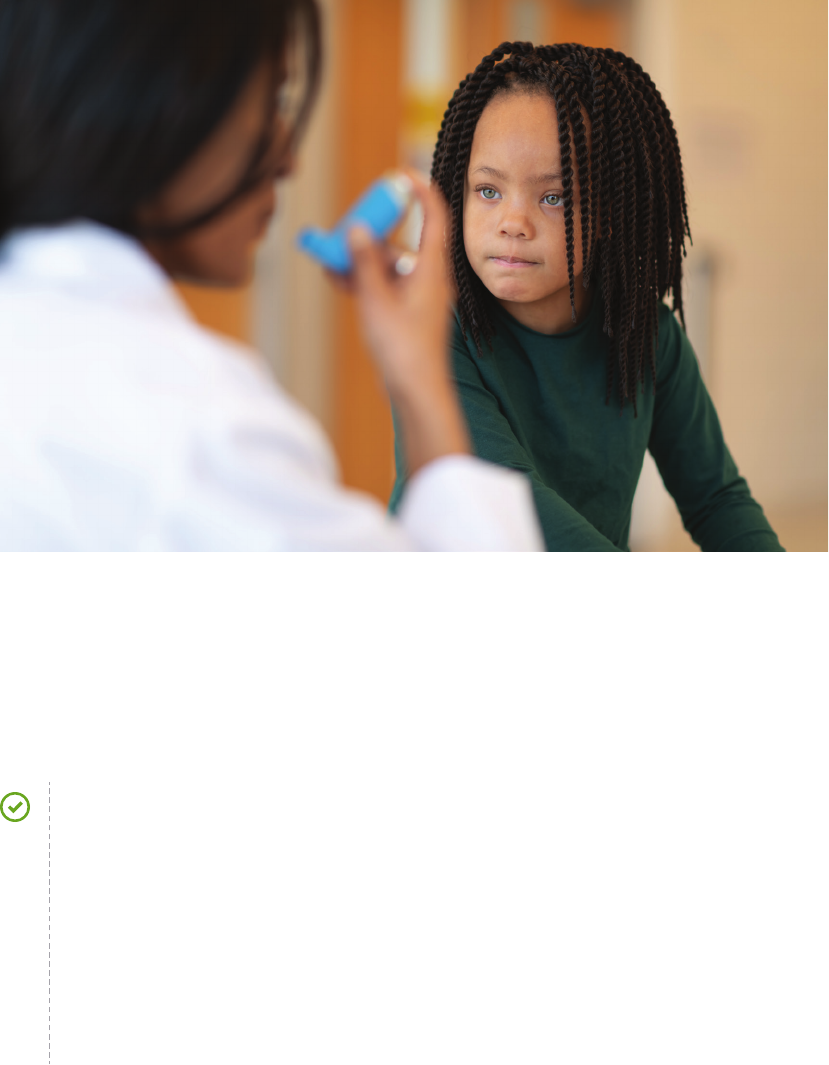
There are numerous illustrations of public health approaches that can be
undertaken by the Oce of Health Services, and it is our hope that the
recommendations made throughout this report will provide the foundation
that is necessary for nurses and nurse leadership to become more involved in
community and public health initiatives.
RECOMMENDATION: ROUTINE SCREENING/
POPULATION-BASED CARE
We recommend a review of the logistical and resource considerations
required for the implementation of “mass screening days” as a
population-based intervention strategy for systems-level eciency.
Within a system that supports mass screening interventions, nurses
may allocate a higher percentage of their time toward individual student
needs and larger community and public health initiatives. We also
recommend that SDP support nurse leadership in using data to assess
and identify core student and community populations who may benefit
from targeted services and/or increased health promotion activities.
EVALUATION REPORT | FALL 2019 27

FUTURE DIRECTIONS
The health of students is
critically important for their
educational engagement and
attainment and can help put
them on a path to a successful
future. The School District
of Philadelphia has a strong
foundation for school health
services and a talented
workforce of school health
nurses and administrators.
The opportunities outlined
in this report to improve the
delivery of health services
will enhance alignment with
best practice and advance
the use of data, technology
and capacity for quality
improvement.
28 IMPROVING SCHOOL HEALTH SERVICES FOR CHILDREN IN PHILADELPHIA
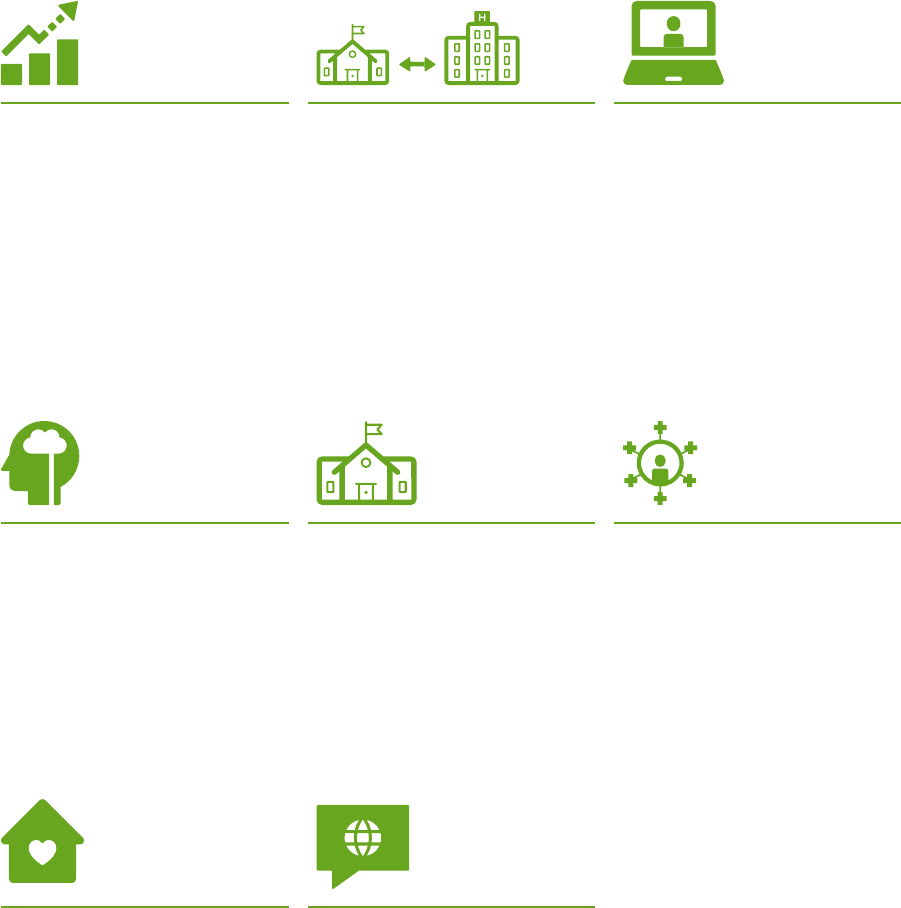
FUTURE DIRECTIONS FOR THIS WORK COULD INCLUDE FURTHER EXPLORATION OR
CONSULTATION ON RECOMMENDATIONS MADE THROUGHOUT THIS REPORT, INCLUDING:
Using data to
improve processes
Exploring how to legally
permit a more effective
exchange of information
between school and external
health professionals
Utilizing telehealth
technology both to provide
additional support to nurses
and expand services
OTHER AREAS FOR FURTHER ASSESSMENT COULD INCLUDE:
A review of behavioral health
services and how they
intersect with SDP student
health and wellness
School-based health centers
and the utility and impact of
their presence throughout
Philadelphia
The effect of care
coordination for children
with medical complexity
How to best support
parenting teens and
youth in foster care
The accessibility of
language access services
EVALUATION REPORT | FALL 2019 29

RECOMMENDATIONS RECAP
QUALITY IMPROVEMENT (QI) INITIATIVES
We recommend allocating resources to support an increased focus on health
service QI initiatives. QI resources are foundational for data-informed
decision-making for health initiative investments and in building the necessary
infrastructure for standardizing and using data to improve the allocation of
nursing resources and eciency of service delivery.
STANDARDIZED DATA COLLECTION
We recommend prioritizing several key data points for standardized tracking that
the district can use to inform QI initiatives.
ELECTRONIC HEALTH RECORD (EHR)
We recommend a careful assessment of the capabilities of the current EHR and,
dependent on the outcome of that review, consideration of a contract with a
technical assistance provider for system improvements. Dashboarding capabilities
are an important component to include in system improvements, as the ability to
quickly view aggregate data is a crucial function for health services. This may be
accomplished through the EHR or may require additional applications.
DATA SHARING
We recommend a review of legal and technical considerations to enable
participation in interagency data sharing or integration relationships to improve
coordination and service delivery across child-serving systems. As a first step,
simplifying legal consents and the creation of an online portal for HIPAA and
FERPA consents would serve as a building block to facilitate future data sharing
arrangements.
STAFFING MODELS
We recommend the use of community and student health data to build models that
accurately predict the district’s nursing needs and allow for eective distribution
of resources. Additionally, to respond to nurse absenteeism, we recommend that
the district use its own data to determine an appropriate number of substitute
nurses for full-time employment.
DATA & EVALUATION FOR PERFORMANCE APPRAISALS
We recommend that SDP fund supervisory certifications for health services
leadership so the nursing director and coordinators can directly oversee clinical
supervision of school nurses. This would allow supervisors to take into account the
nurses’ use of data-informed decision-making as part of performance appraisals.
NURSE DELEGATION
We recommend that SDP delegate non-medical tasks to qualified nursing assistants
to support school nurses in prioritizing responsibilities of addressing complex
health care needs while balancing other responsibilities such as screening,
medication administration, and response to acute and urgent health care needs.
30 IMPROVING SCHOOL HEALTH SERVICES FOR CHILDREN IN PHILADELPHIA

COLLABORATIVE CARE
We recommend that SDP ensure a collaborative approach to health services by:
• Assessing the current organization of health service-related departments and
programming and aligning where appropriate using the Whole School, Whole
Community, Whole Child (WSCC) as a guide
• Creating a resource guide that spans physical and behavioral health services
and provides information to sta that clearly describes the available health
services and supports
• Emphasizing nurse participation on interdisciplinary care teams and considering
the creation of school wellness committees using the current tier structure
POLICIES & PROCEDURES
We recommend that school nurses have a readily available policy manual
including descriptions of the policies and procedural steps needed to implement.
Additionally, we recommend engagement from all necessary stakeholders in policy
creation. SDP should also utilize the Central Level Wellness Committee as a venue
for collaborative communication regarding nursing practice and procedure.
PROFESSIONAL DEVELOPMENT
We recommend the allocation of resources for professional development activities
to include visiting speaker presentations with continuing education units
(CEUs) and/or the procurement of software for e-learning or videoconferencing
capabilities. Additionally, we recommend routine cross-training for school nurses
and behavioral health professionals.
IMMUNIZATIONS
We recommend the creation of a district-wide, nurse-initiated vaccine compliance
strategy to include education, reminders and exclusion when necessary.
HEALTH EDUCATION/PARENT ENGAGEMENT
We recommend the creation of a standardized process for nurse involvement in
health education and family engagement. SDP should utilize the Student Health
Advisory Council as a venue for expert consultation.
ROUTINE SCREENING/POPULATION-BASED CARE
We recommend a review of the logistical and resource considerations required for
the implementation of “mass screening days” as a population-based intervention
strategy for systems-level eciency. Within a system that supports mass screening
interventions, nurses may allocate a higher percentage of their time toward
individual student needs and larger community and public health initiatives. We
also recommend that SDP support nurse leadership in using data to assess and
identify core student and community populations who may benefit from targeted
services and/or increased health promotion activities.
EVALUATION REPORT | FALL 2019 31
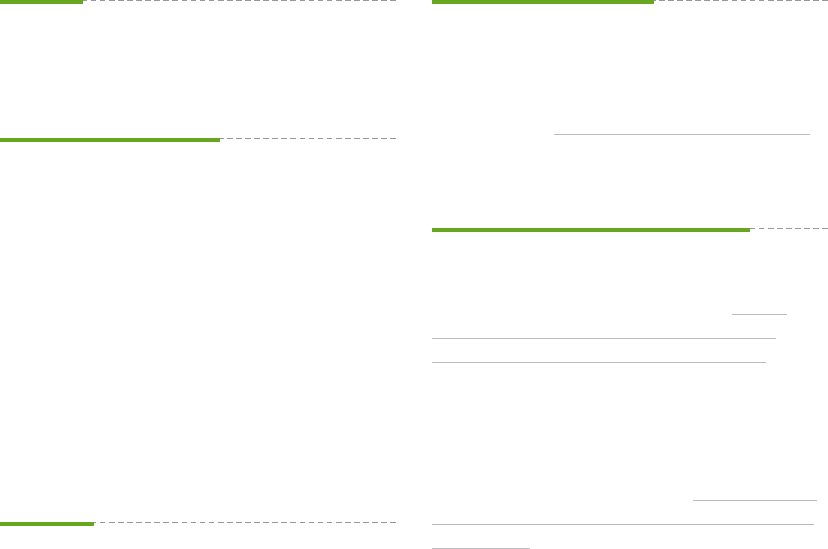
AUTHOR
Shawna Dandridge, LCSW, is the behavioral
health strategy manager at PolicyLab at
Children’s Hospital of Philadelphia.
ACKNOWLEDGMENTS
Advisory committee of PolicyLab pediatric
health care content experts:
Tyra Bryant-Stephens, MD
Ahaviah Glaser, JD
Meredith Matone, DrPH, MHS
David Rubin, MD, MSCE
Jami Young, PhD
PolicyLab sta who provided research
and editorial contributions:
Linda McWhorter, PhD
Madeline O’Brien, MPA
PARTNER
PolicyLab thanks the School District of
Philadelphia (SDP) for partnering on this
report. In particular, we want to recognize the
administrators of the Oce of Student Health
Service for their participation, enthusiasm and
support throughout this project. We are also
grateful to the various stakeholders within SDP
who participated in interviews—school nurses,
guidance counselors, physical therapists and
members of the SDP leadership team—as well as
the national school health leaders we interviewed
from external districts.
SUGGESTED CITATION
Dandridge S. Improving School Health Services
for Children in Philadelphia: An Evaluation Report
for the School District of Philadelphia. PolicyLab
at Children’s Hospital of Philadelphia; 2019.
Retrieved from bit.ly/PolicyLab_PhilaSD_Report
RELATED POLICYLAB RESEARCH
Children’s Hospital of Philadelphia, PolicyLab.
Promoting Positive Educational Outcomes for
Vulnerable Populations. Retrieved from ht tps://
policylab.chop.edu/project/promoting-positive-
educational-outcomes-vulnerable-populations
Hwang, S, Gris, H, Song, L, & Rubin, D. Supporting
the Needs of Students Involved with the Child Welfare
or Juvenile Justice System in the School District of
Philadelphia. PolicyLab at Children’s Hospital of
Philadelphia; 2014. Retrieved from https://policylab.
chop.edu/report/supporting-students-involved-with-
child-welfare
32 IMPROVING SCHOOL HEALTH SERVICES FOR CHILDREN IN PHILADELPHIA

REFERENCES
1. Education Law Center. The School Nurse Shortage in
Philadelphia: Prognosis & Prescription for Change.
https://www.elc-pa.org/wp-content/uploads/2014/01/
ELC_SchoolNurseReport_May2013.pdf. Published
May, 2013. Accessed 2019.
2. Shaping Your Practice and Changing Mindsets:
Framework for 21st Century School Nursing
Practice. NASN School Nurse. 2018; 33(4):236–238.
doi:10.1177/1942602x18778292.
3. ASCD and Centers for Disease Control and
Prevention. Whole School Whole Community Whole
Child: A Collaborative Approach to Learning and
Health. http://www.ascd.org/ASCD/pdf/siteASCD/
publications/wholechild/wscc-a-collaborative-
approach.pdf. Published 2014. Accessed 2019.
4. ASCD and Centers for Disease Control and
Prevention. Whole School Whole Community Whole
Child: A Collaborative Approach to Learning and
Health. http://www.ascd.org/ASCD/pdf/siteASCD/
publications/wholechild/wscc-a-collaborative-
approach.pdf. Published 2014. Accessed 2019.
5. National Association of School Nurses. Electronic
Health Records: An Essential Tool in Keeping Students
Healthy (Position Statement). https://www.nasn.org/
advocacy/professional-practice-documents/position-
statements/ps-electronic-health-records. Published
2019. Accessed 2019.
6. Immunizations, 28 PA Code § 23 (1997).
7. Centers for Disease Control and Prevention.
Improving Vaccination Coverage Fact Sheet.
https://www.cdc.gov/vaccines/imz-managers/laws/
downloads/Improving-Vax-Coverage-Factsheet.pdf.
Published April, 2015. Accessed 2019.
8. Framework for 21st Century School Nursing
Practice: National Association of School
Nurses. NASN School Nurse. 2016; 31(1):45–53.
doi:10.1177/1942602X15618644.
9. Framework for 21st Century School Nursing
Practice: National Association of School
Nurses. NASN School Nurse. 2016; 31(1):45–53.
doi:10.1177/1942602X15618644.
10. Johnson KH, Bergren MD, Westbrook LO. The
Promise of Standardized Data Collection. The
Journal of School Nursing. 2011;28(2):95–107.
doi:10.1177/1059840511426434.
11. Sheetz A. How May the School Nurse Use Data
Eectively? NASN School Nurse. January 2012.
doi:10.1177/1942602X11426459.
12. Shannon R, Bergen M, Matthews A. Frequent Visitors.
The Journal of School Nursing. June 2010; 26. 169–82.
doi:10.1177/1059840509356777.
13. Uniform data points. Data Points for 2018–2019:
Yearlong data collection school health stang. https://
www.nasn.org/nasn/research/everystudentcounts/
uniform-data-points. Published 2018. Accessed July
18, 2019.
14. Uniform data points. Data Points for 2018–2019:
Yearlong data collection school health stang. https://
www.nasn.org/nasn/research/everystudentcounts/
uniform-data-points. Published 2018. Accessed July
18, 2019.
15. National Association of School Nurses. Electronic
Health Records: An Essential Tool for School Nurses
to Keep Students Healthy. (Position Statement).
https://www.nasn.org/advocacy/professional-practice-
documents/position-statements/ps-electronic-health-
records. Published 2019. Accessed 2019.
16. American Association of School Nurses. The Role of
the 21st Century School Nurse. (Position Statement).
https://www.nasn.org/advocacy/professional-practice-
documents/position-statements/ps-role. Published
2018. Accessed 2019.
17. National Association of School Nurses. Electronic
Health Records: An Essential Tool for School Nurses
to Keep Students Healthy. (Position Statement).
https://www.nasn.org/advocacy/professional-practice-
documents/position-statements/ps-electronic-health-
records. Published 2019. Accessed 2019.
18. The Role of the School Nurse in Providing School
Health Services. Pediatrics. 2016; 108(5):1231–1232.
doi:10.1542/peds.108.5.1231.
19. Sheetz AH. How May the School Nurse Use Data
Eectively? NASN School Nurse. 2012;27(1):42–46.
doi:10.1177/1942602x11426459.
20. Association of State and Territorial Health Ocials
(ASTHO) Legal Preparedness Series. Public Health
Access to Student Health Data. http://www.astho.org/
Programs/Preparedness/Public-Health-Emergency-
Law/Public-Health-and-Schools-Toolkit/Public-
Health-Access-to-Student-Health-Data. Issue Brief.
Published December 2011. Accessed April 2019.
21. Sharing Data to Meet Student Health Needs in
Washington, D.C. Healthy Schools Campaign. htt p s ://
healthyschoolscampaign.org/policy/sharing-data-meet-
student-health-needs-washington-d-c/. Accessed 2019.
22. Sharing Data to Meet Student Health Needs in
Washington, D.C. Healthy Schools Campaign. htt p s ://
healthyschoolscampaign.org/policy/sharing-data-meet-
student-health-needs-washington-d-c/. Accessed 2019.
23. Healthy Schools Campaign. Sharing Data to Meet
Student Health Needs in Washington, D.C. ht t ps://
healthyschoolscampaign.org/policy/sharing-data-meet-
student-health-needs-washington-d-c/. Accessed 2019.
24. Tomek D. Linking School Nurse Partners via
Electronic Health Record Portal Dashboard. ht t ps://
www.childrenshospitals.org/Issues-and-Advocacy/
Population-Health/Presentations/Electronically-
Bridging-Your-Health-Care-Team-with-School-Nurses.
Published October 8, 2018. Accessed July 17, 2019.
25. Tomek D. Linking School Nurse Partners via
Electronic Health Record Portal Dashboard. ht t ps://
www.childrenshospitals.org/Issues-and-Advocacy/
Population-Health/Presentations/Electronically-
Bridging-Your-Health-Care-Team-with-School-Nurses.
Published October 8, 2018. Accessed July 17, 2019.
26. Guttu M, Engelke MK, Swanson M. Does the
School Nurse-to-Student Ratio Make a Dierence?
Journal of School Health. 2004;74(1):6–9.
doi:10.1111/j.1746-1561.2004.tb06593.x.
27. Michael SL, Merlo CL, Basch CE, Wentzel KR,
Wechsler H. Critical Connections: Health and
Academics. Journal of School Health. 2015;85(11):740–
758. doi:10.1111/josh.12309.
28. National Association of School Nurses. School Nurse
Workload: Stang for Safe Care. (Position Statement).
https://www.nasn.org/advocacy/professional-
practice-documents/position-statements/ps-workload.
Published 2015. Accessed 2019.
29. American Academy of Pediatrics Council on School
Health. Role of the School Nurse in Providing School
Health Services. Pediatrics. 2016;137(6). doi: 10.1542/
peds.2016-0852.
30. American Academy of Pediatrics Council on School
Health. Role of the School Nurse in Providing School
Health Services. Pediatrics. 2016;137(6). doi: 10.1542/
peds.2016-0852.
31. AISD Student Health Services: Dell Children’s. AISD
Student Health Services. https://www.dellchildrens.
net/services-and-programs/aisd-student-health-
services/. Accessed July 17, 2019.
32. Freeman, S, Pont, S, and Millea, S. Children’s/
AISD Student Health Services. Presented at: School
Health Advisory Council; April 6, 2016; Austin, TX.
https://www.dellchildrens.net/wp-content/uploads/
sites/60/2015/08/Student-Health-Summary-2014-15.
pdf. Accessed March 2019.
33. National Association of School Nurses. Supervision
and Evaluation of the School Nurse. (Position
Statement). https://www.nasn.org/advocacy/
professional-practice-documents/position-statements/
ps-supervision. Published 2018. Accessed 2019.
34. School Health, 22 Pa. Code §12.16 (1997).
35. National Association of School Nurses. Supervision
and Evaluation of the School Nurse. (Position
Statement). https://www.nasn.org/advocacy/
professional-practice-documents/position-statements/
ps-supervision. Published 2018. Accessed 2019.
36. School Health, 22 Pa. Code §12.16 (1997).
37. Hae LM, Damm P, Cross B. School Nurses Race
to the Top. The Journal of School Nursing. 2014;
30(6):404–410. doi:10.1177/1059840514536581.
38. McDaniel KH, Overman M, Guttu M, Engelke
MK. School nurse evaluations: Making the
process meaningful and motivational. The
Journal of School Nursing. 2013; 29(1): 19–30.
doi:10.1177/1059840512469407.
39. Shaping Your Practice and Changing Mindsets:
Framework for 21st Century School Nursing
Practice. NASN School Nurse. 2018;33(4):236–238.
doi:10.1177/1942602x18778292.
40. Engelke MK, Swanson M, Guttu M. Process and
Outcomes of School Nurse Case Management for
Students with Asthma. The Journal of School Nursing.
2014; 30(3):196–205. doi:10.177/1059840513507084.
41. The Role of the School Nurse in Providing School
Health Services. Pediatrics. 2001; 108(5):1231–1232.
doi:10.1542/peds.108.5.1231.
42. Federal Interagency Forum on Child and Family
Statistics. America’s Children: Key National Indicators
of Well-Being. Washington, DC: U.S. Government
Printing Oce; 2013.
43. National Association of School Nursing. Delegation,
Nursing Delegation to Unlicensed Assistive Personnel
in the School Setting. (Position Statement). htt p s://
www.nasn.org/nasn/advocacy/professional-practice-
documents/position-statements/ps-delegation. Published
2006. Revised June 2014. Accessed January 2019.
44. National Association of School Nurses. Job
Description for School Nursing Assistant. portal.nasn.
org/text/6905_W40_2_001-002.pdf. Published 2013.
Accessed 2019.
45. National Association of School Nurses. The Role of
School Nursing in Telehealth. (Position Statement).
https://www.nasn.org/nasn/advocacy/professional-
practice-documents/position-statements/ps-telehealth.
Published June 2017. Accessed May 2019.
46. Pennsylvania Association of School Nurses and
Practitioners. A Message from the PA DOH. ht tps://
pasnap.nursingnetwork.com/nursing-news/127011-
a-message-from-the-pa-doh. Published June 2018.
Accessed June 2019.
47. Los Angeles Unified School District. Resource Guide
for Principals. https://achieve.lausd.net/cms/lib/
CA01000043/Centricity/domain/650/pdfs/SHHS_
Principals%20Resource%20Guide.pdf. Published date
unknown. Accessed April 2019.
EVALUATION REPORT | FALL 2019 33

48. Shaping Your Practice and Changing Mindsets:
Framework for 21st Century School Nursing
Practice. NASN School Nurse. 2018;33(4):236–238.
doi:10.1177/1942602x18778292.
49. Centers for Disease Control and Prevention. School
Health Policy. https://www.cdc.gov/healthyyouth/
about/policy.htm. Accessed March 2019.
50. American Academy of Pediatrics. School Health
Services Policy Development Guidance. htt p s://
schoolhealthteams.aap.org/uploads/ckeditor/files/
aap%20policy%20guide%20FINAL.pdf. Published
date unknown. Accessed February 2019.
51. American Academy of Pediatrics. School Health
Services Policy Development Guidance. htt p s://
schoolhealthteams.aap.org/uploads/ckeditor/files/
aap%20policy%20guide%20FINAL.pdf. Published
date unknown. Accessed February 2019.
52. Sheetz AH. How May the School Nurse Use Data
Eectively? NASN School Nurse. 2012;27(1):42–46.
doi:10.1177/1942602X11426459.
53. Maughan E, Mangena AS. The 2013 NASN School
Nurse Survey. NASN School Nurse. 2014;29(2):76–83.
doi:10.1177/1942602x14523135.
54. Rosenblum RK, Sprague-McRae J. Using
Principles of Quality and Safety Education for
Nurses in School Nurse Continuing Education.
The Journal of School Nursing. 2013;30(2):97–102.
doi:10.1177/1059840513489710.
55. Adams S, McCarthy AM. Evidence-based practice and
school nursing. Journal of School Nursing. 2005;(21):258–
665 doi:10.1177/10598405050210050301.
56. Vought-Osullivan V, Meehan NK, Havice PA, Pruitt
RH. Continuing Education: A National Imperative
for School Nursing Practice. The Journal of School
Nursing. 2006;22(1). doi:10.1622/1059-8405.
57. Gilliver C. Trauma-informed care in response to
adverse childhood experiences. Nursing Times.
June 8, 2018. https://www.nursingtimes.net/roles/
nurse-educators/trauma-informed-care-in-response-
to-adverse-childhood-experiences/7024813.article.
Accessed July 2019.
58. Schroeder K, Malone SK, McCabe E, Lipman
T. Addressing the Social Determinants of
Health: A Call to Action for School Nurses. The
Journal of School Nursing. 2018;34(3):182–191.
doi:10.1177/1059840517750733.
59. Lewallen TC, Hunt H, Potts-Datema W, Zaza S,
Giles W. The Whole School, Whole Community,
Whole Child Model: A New Approach for Improving
Educational Attainment and Healthy Development for
Students. Journal of School Health. 2015;85(11):729–
739. doi:10.1111/josh.12310.
60. Schaer, MA, Anderson, LJW, & Rising, S. Public
Health Interventions for School Nursing Practice.
The Journal of School Nursing. 2016;32(3):195–208.
doi:10.1177/1059840515605361.
61. Pennsylvania Department of Health. School
vaccination requirements for attendance in
Pennsylvania Schools. https://www.health.pa.gov/
topics/Documents/School%20Health/SIR8.pdf.
Accessed 2019.
62. Centers for Disease Control and Prevention. Vaccines:
Why Immunize? https://www.cdc.gov/vaccines/vac-
gen/why.htm. Accessed May 2019.
63. National Association of School Nurses.
Immunizations (Position Statement). https://www.
nasn.org/nasn/advocacy/professional-practice-
documents/position-statements/ps-immunizations.
Published 2015. Accessed 2019.
64. National Association of School Nurses.
Immunizations (Position Statement). https://www.
nasn.org/nasn/advocacy/professional-practice-
documents/position-statements/ps-immunizations.
Published 2015. Accessed 2019.
65. Swallow W, Roberts, JC. An Evidence-Based Project
Demonstrating Increased School Immunization
Compliance Following a School Nurse–Initiated
Vaccine Compliance Strategy. The Journal of School
Nursing. 2016;32(6). doi:10.1177/1059840516665216.
66. Hall, KJ, Howell, MA, Jansen, RJ, Carson, PJ.
Enforcement Associated with Higher School-
Reported Immunization Rates. American Journal
of Preventive Medicine. 2017; 53(6). doi:10.1016/j.
amepre.2017.08.010.
67. Centers for Disease Control and Prevention. Parent
Engagement: Strategies for Involving Parents in
School Health. https://www.cdc.gov/healthyyouth/
protective/pdf/parent_engagement_strategies.pdf.
Published January 2013. Accessed May 2019.
68. Denehy J. Health Education: An Important Role
for School Nurses. The Journal of School Nursing.
2001;17(5):233–238. doi:10.1177/105984050101700
50101.
69. Required Health Services, 28 PA Code § 23.1 (1959).
70. Nelson H, Rajan S. Barriers and facilitators to
successful school-based health screenings. Health
Behavior and Policy Review. 2018;5(4):57–71.
doi:10.14485/HBPR.5.4.7.
71. Lewallen TC, Hunt H., Potts-Datema W, Zaza S, Giles
W. The whole school, whole community, whole child
model: A new approach for improving educational
attainment and healthy development for students.
Journal of School Health. 2015;85(11):729–739.
doi:10.1111/josh.1231D.
72. Dudovitz RN, Valiente, JE, Espinosa G, Yepes C,
Padilla C, Puer, M, Chung, PJ. A school-based public
health model to reduce oral health disparities. Journal
of public health dentistry. 2018;78(1):9–16. doi:10.111/
jphd.12216.
34 IMPROVING SCHOOL HEALTH SERVICES FOR CHILDREN IN PHILADELPHIA
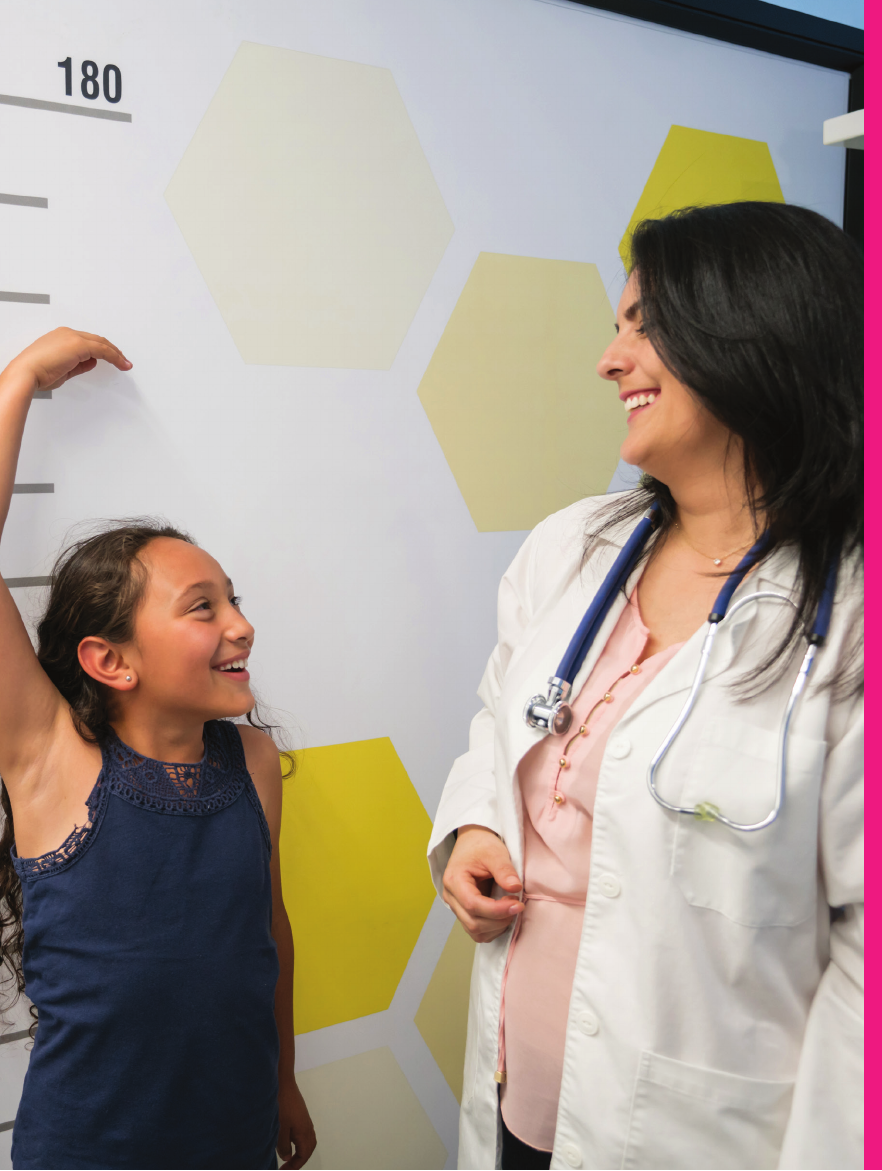
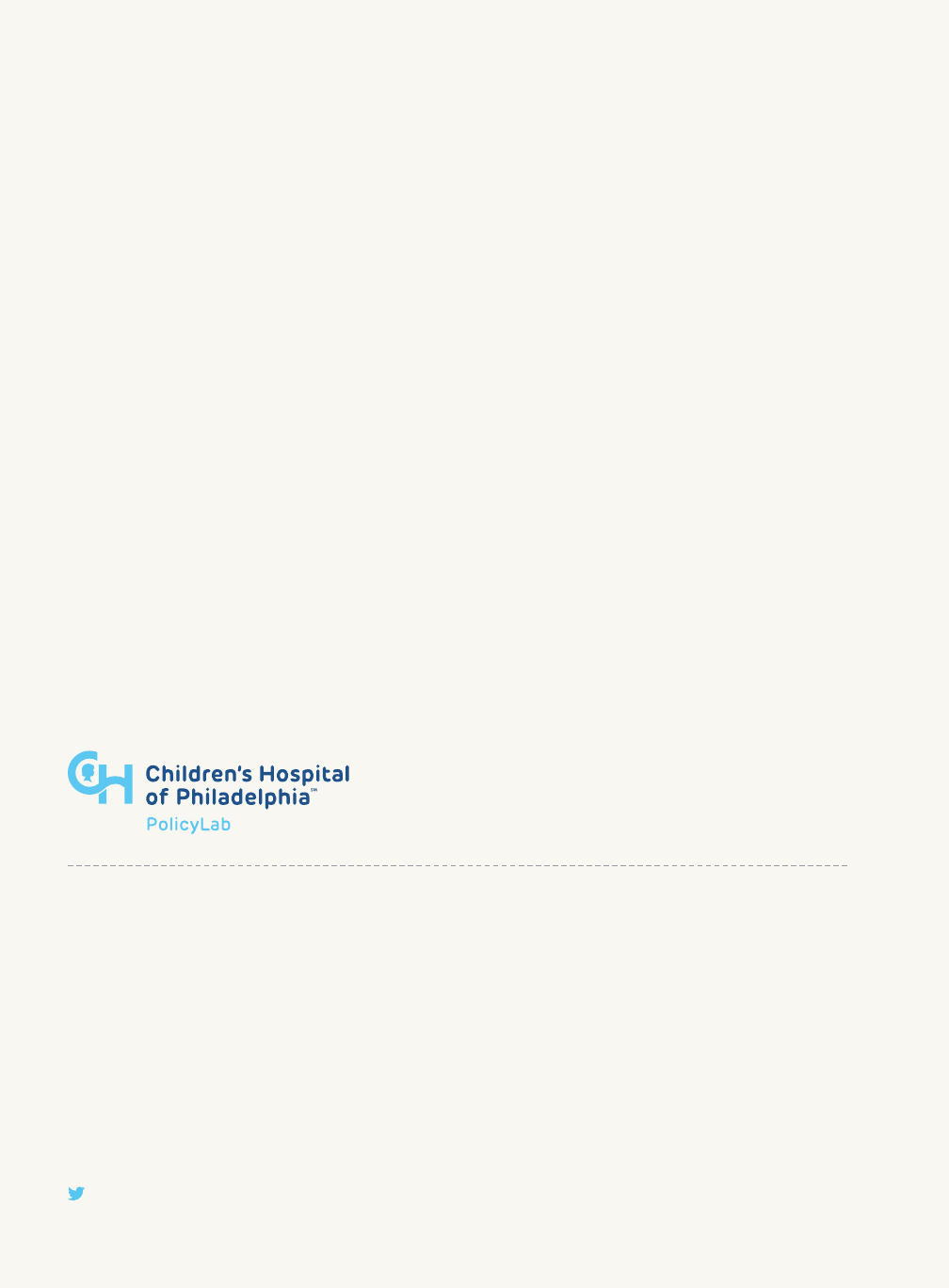
The mission of PolicyLab at Children’s
Hospital of Philadelphia is to achieve
optimal child health and well-being by
informing program and policy changes
through interdisciplinary research.
Founded in 2008, PolicyLab is a Center of Emphasis within the Children’s
Hospital of Philadelphia Research Institute, one of the largest pediatric research
institutes in the country. At PolicyLab, our experience caring for children and
families informs our “evidence to action” approach to improving children’s health.
PolicyLab
Children’s Hospital of Philadelphia
2716 South Street
Roberts Center for Pediatric Research,
10th Floor
Philadelphia, PA 19146
P 267-426-5300
F 267-426-0380
PolicyLab@email.chop.edu
policylab.chop.edu
@PolicyLabCHOP
